AVIONICS: GARMIN PRIMES FOR TOUCHSCREENS
LEGACY TAILS: BRITAIN’S LONG-LIVED BIZJET
REGULATIONS: PILOT RECORDS, TIME TO COMPLY
Special Report: Mainstreaming SAF

AVIONICS: GARMIN PRIMES FOR TOUCHSCREENS
LEGACY TAILS: BRITAIN’S LONG-LIVED BIZJET
REGULATIONS: PILOT RECORDS, TIME TO COMPLY
Special Report: Mainstreaming SAF
AI is spurring a new generation of avionics and training approaches





Gogo to acquire Satcom Direct in surprise announcement


G3000 Prime is moving touchscreens into business aircraft cockpits
8 Volunteers activated for hurricane disaster rescues
JetNet survey sees growing pessimism in bizav industry 12 Year-to-date turbine bizav accidents decline
Special Report: Still in its infancy, SAF growing by leaps and bounds
Legacy Tails: De Havilland’s DH.125— Britain’s long-lived business jet
FAA interpretation disallows remote maintenance supervision
AI elicits a new generation of avionics and pilot training tools
Nexus eVTOL progressing at Textron eAviation
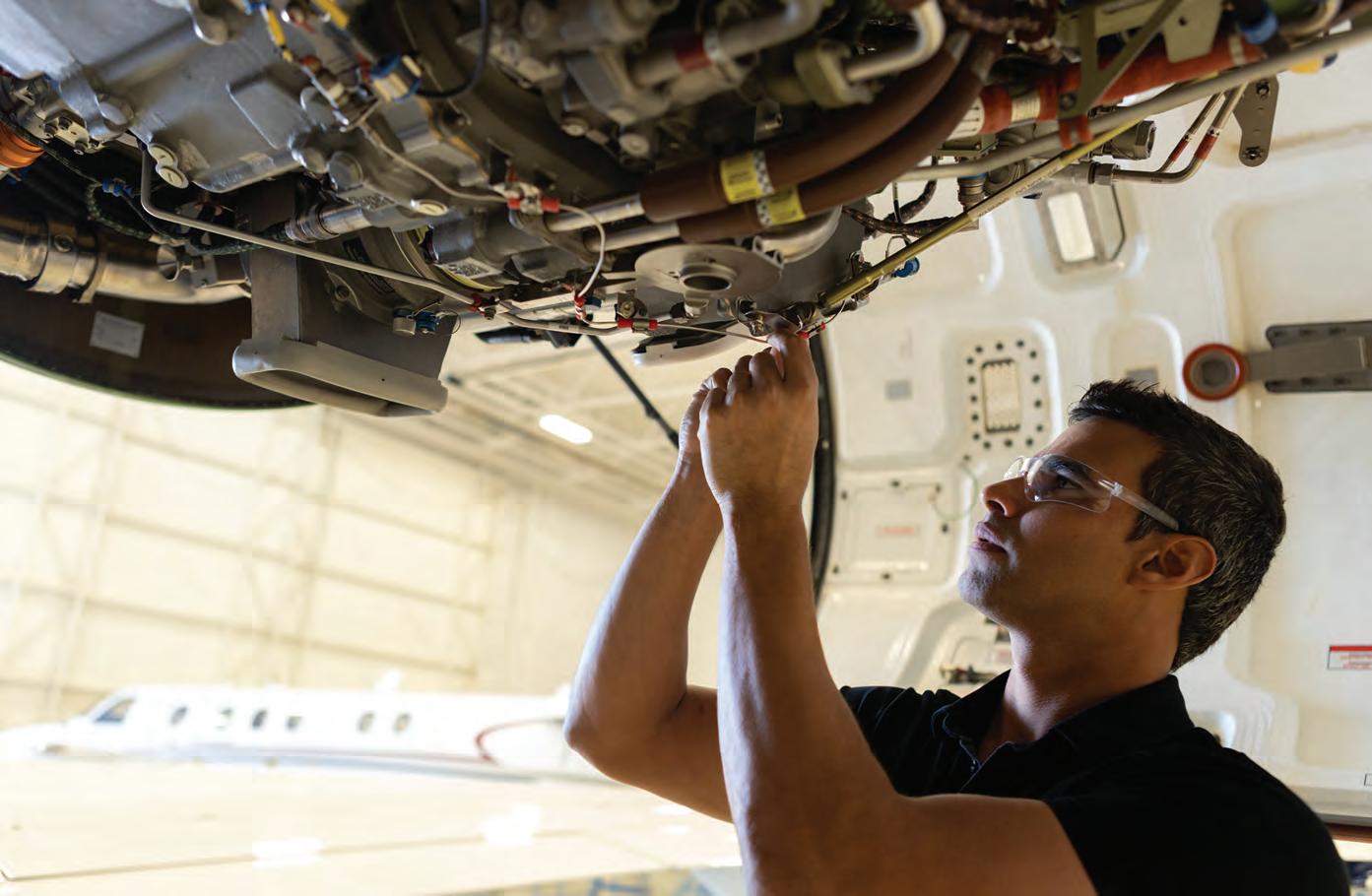

We were meant to fly.


Our engines power flight.
A love of flight powers us.

BY MATT THURBER AND SARAH ROSE
Gogo Business Aviation is buying Satcom Direct, a satellite communications hardware manufacturer and service provider, in a deal that took the business aviation industry by surprise when it was announced on September 30. Under the agreement, Satcom Direct will receive $375 million in cash and five million shares of Gogo stock at closing, and up to an additional $225 million in payments tied to realizing certain performance thresholds over the next four years.
The move boosts Gogo into a much higher satcom orbit, adding Satcom Direct’s Plane Simple antenna and hardware product lines for geostationary (GEO) satellite networks such as Viasat and Intelsat to Gogo’s soon-to-launch low-earth-orbit (LEO) Galileo system, which runs on Eutelsat’s OneWeb network. If anything, this acquisition will give Gogo a solid competitive edge and a full line of products, including its air-toground system in the U.S. and Canada, that will provide a counterbalance to business aircraft owners’ keen interest in SpaceX’s Starlink LEO satcom.
Satcom Direct confirmed that the Melbourne, Florida-based SD Data Center will be included in the acquisition. The company
uses this data center to provide a layer of cybersecurity for customer aircraft.
“This transaction accelerates our growth strategies of expanding our total addressable market to include the 14,000 business aircraft outside North America, and delivering solutions that meet the needs of every segment of the BA market,” said Oakleigh Thorne, Gogo chairman and CEO. “Together, Gogo and Satcom Direct will offer integrated GEO-LEO satellite solutions that provide the highest performance of any satellite solution, along with the world-class customer support that the global heavy jet segment demands.”
“Satcom Direct is thrilled to be joining forces with Gogo, a company that shares our focus on delivering outstanding service and leading innovation,” said Chris Moore, Satcom Direct president. “Our businesses have highly complementary core competencies, and our combined financial strength and expertise unlocks opportunities to invest in new technology and deliver significant long-term value creation.”
Gogo said that members of Satcom Direct’s leadership team are expected to join Gogo after the deal closes at year-end. z
Gulfstream could be closer to launching the G300, a long-rumored derivative of its super-midsize G280, according to aircraft broker Hagerty Jet. The G280 is manufactured for Gulfstream in Tel Aviv by Israel Aircraft Industries (IAI). “IAI has reported they will manufacture an upgraded version of the G280, which we speculate will be called the G300. A prototype has been designed and built but details are very secretive,” the firm said. Another source confirmed the secrecy of the codenamed P42 project, terming it “o the charts.”
Machinist union members at Textron Aviation rejected the company’s contract proposal for a 26% wage hike over four years and began to strike in late September. The job action involved approximately 5,000 members of the International Association of Machinists Local Lodge 774 District 70. Analysts were hopeful that the strike would conclude by the end of last month; as of press time in October, it continued. Forecaster JetNet was revising downward its industry-wide delivery expectations as a result, and one analyst estimated the strike could have a $300 million impact on revenues each month it lasts.
Wheels Up Experience lead investors Delta Air Lines, CK Wheels, and Cox Investment Holdings agreed to extend the lock-up restriction with respect to all their shares of common stock for an additional year, until Sept. 20, 2025. The news comes after the company reported progress in bolstering its balance sheet during the second quarter, further reducing losses as its leadership team strives to reverse the private flight provider’s fortunes under a new business model.
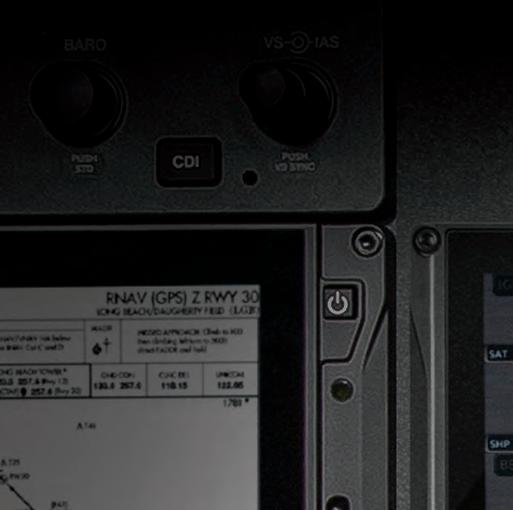
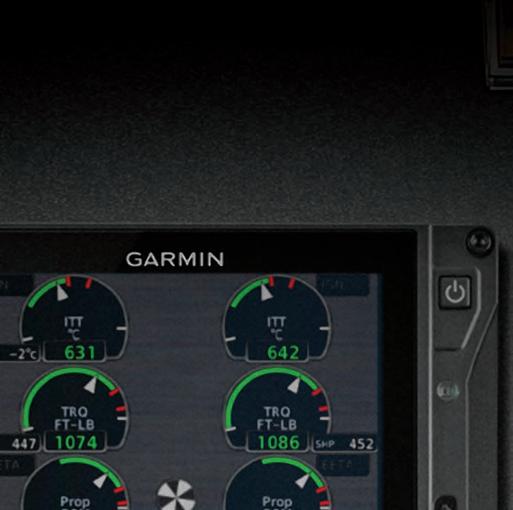


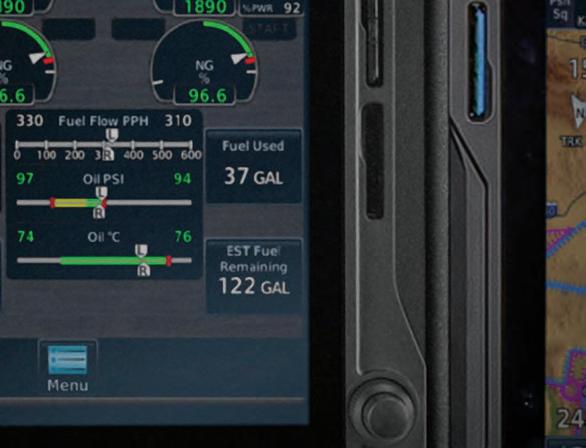





BY AIN STAFF

The business and general aviation community mobilized in the wake of Hurricanes Helene and Milton as widespread devastation crippled communities from Florida through Tennessee. Shortly after Helene, disaster relief volunteer organization AeroBridge, as well as NBAA’s complementary Humanitarian Emergency Response Operator (HERO) database, both activated, coordinating support and enabling business and general aviation operations to find a path to volunteer their help.
They joined the myriad relief organizations jumping into the fray. Among other volunteer organizations helping with rescue and supply efforts was Operation Airdrop, which launched Operation Helene to provide disaster relief.
Commenters on the AeroBridge Facebook page had stressed how dire the situation had become, reporting stories of stranded families, a mother about ready to give birth, and food supplies quickly running out.
NBAA underscored the important role operators have played. “Business aircraft have long played an essential role in providing relief for people and communities
in need in times of crisis,” noted Doug Carr, NBAA senior v-p of safety, security, sustainability, and international operations. “They are often able to turn roadways into runways, or hillsides into heliports, in order to reach isolated locations.” He added that NBAA’s HERO database provides access to those who want to lend a helping hand with aircraft and other assets.
The outpouring was so strong that the FAA had reported a 300% increase in air traffic over the heavily impacted western part of North Carolina, with private aircraft delivering supplies along with the state’s National Guard and military search-and-rescue.
As a result, the North Carolina Division of Aviation—in coordination with federal and state agencies such as FEMA, the FAA, the North Carolina National Guard, and the Department of Defense—implemented several safety strategies such as prior permission request lines established at airports for pilots to schedule landing, unloading, and aircraft parking, thus reducing airport congestion and risk of incidents. Designated flight routes and short-duration TFRs and temporary towers were also established. z
The Skyryse One, a Robinson R66 helicopter modified with fly-by-wire flight controls and a single-control user interface, has received a special airworthiness certificate from the FAA. The certificate is another step toward supplemental type certification of the Skyryse One and facilitates further flight testing on the way to planned FAA approval next year. With the certificate in hand, Skyryse plans to begin flight testing with a production version of the Skyryse One.
Flexjet has broken ground on its initial private terminal in Europe, the first such facility o ered by a fractional operator outside North America. Located at the UK’s Farnborough Airport and scheduled for completion in 2026, the 22,600-sqft ramp-side structure will be separate from the airport’s FBO. On the operations side, the London-area facility will be home to Flexjet’s tactical control center, operational team, and pilot amenities.
The U.S. House of Representatives and the Senate passed a short-term funding bill that keeps the federal government operating— including key agencies such as the FAA— through December 20 while work continues on a longer-term budget. Passage occurred before both chambers adjourned until November 12, after the elections, averting a government-wide shutdown that would have otherwise set in at the end of the fiscal year on October 1. Pushing the vote until December 20 sets up a debate on funding priorities for fiscal year 2025—including up to a $22 billion FAA budget with funding to hire 2,000 controllers and expedite ATC upgrades—during a lame-duck session.


BY CURT EPSTEIN
JetNet’s latest quarterly survey shows growing uncertainty and pessimism in the business aviation industry. Speaking during the company’s annual iQ Summit in September, Rolland Vincent, iQ survey founder and the head of Rolland Vincent Associates, noted that in the company’s Q3 survey, almost 60% of the 400 respondents indicated that they felt the industry had not yet reached the low point in the current business cycle, outnumbering those who believe the economy was on an upswing nearly 2-to-1.
In the U.S.—the world’s largest business aviation market—industry net optimism has reached its lowest point since the initial Covid surge in 2020, with little variance among the aircraft operator segments. “We’re in a bit of a strange place,” said Vincent. “Part of it is geopolitical tensions, presidential election uncertainties for sure, changes in interest rates, inflation, all these sorts of things, and just general tensions around wealth.”

The preowned inventory for nearly all industry segments continues to rise with the exception of large ultra-long-range jets, which have stabilized at approximately 6.4% of the fleet on the market, and personal jets, which declined to 7.2% availability in August. Vincent noted continued stabilization in the preowned jet market as some young aircraft have begun to appear on the market for the first time in several years. “The market is moving and it’s normalizing back up to seven to eight percent of the fleet,” he told the audience. “We want to start seeing numbers like that because with two-year backlogs, [preowned] is another way to get people into the industry.”
Currently, the business aircraft market maintains a $51 billion backlog. The book-tobill ratios have been declining from their post-Covid highs to a more normal 1-to-1.
Toyota is investing a further $500 million in eVTOL aircraft developer Joby Aviation. The funding, announced last month, will take the Japanese car maker’s total investment in Joby to $894 million and will be paid in equal tranches later this year and then in 2025 as cash in return for common stock. The terms of the investment agreement cover plans for the two companies to establish joint manufacturing arrangements for Joby’s four-passenger electric aircraft. The new funding will directly support e orts to complete FAA type certification and start commercial manufacturing in time for deliveries to begin in 2025.
More than 100 customer pilots had earned type ratings for the Gulfstream G700 at the FlightSafety International learning center in Savannah, Georgia by the end of September. Additionally, 80 pilots at Gulfstream Aerospace and 20 FlightSafety instructors have G700 type ratings in the ultra-long-range jet. The G700 received FAA approval on March 29 and entered service soon after; the fly-by-wire airplane is also certified by 10 other agencies, including EASA and most recently the UK CAA.
Yet despite this short-term pessimism, the survey respondents indicated that over the next 5 to 10 years, half expected to increase the utilization of their aircraft, while 46% anticipated enlarging their current business aircraft fleet.
Though the U.S. gross domestic product continues to rise, the number of U.S. business jet operations has declined from a peak of 5.4 million in 2022 to a plateau of little more than 5 million for the past two years, while the U.S. business jet fleet has hovered above 15,000 units for the past three years.
JetNet predicts that 2024 will finish with 808 business jet deliveries, but Vincent noted that it was watching the Textron Aviation strike closely and may downgrade that. Its latest industry forecast calls for deliveries of 8,644 new business jets over the next decade with a value of $262 billion. That represents a net decrease of 40 jets from last year’s forecast. Of that total, the light and large ultralong-range jet segments make up the largest portions, at 22.6% and 22.2% respectively.
For the turboprop market, the 10-year forecast calls for the delivery of 4,332 turboprops—nearly 10% of them twin engines— worth $25 billion. z
Retail sales volume of preowned twin-engine helicopters dropped 30% as available supply increased 26% in the first six months, according to the Aero Asset 2024 Half Year Heli Market Trends Twin-Engine report. V-p of market research Valerie Pereira added the absorption rate at current trade levels is up to 18 months of supply. Nevertheless, prices are at a five-year peak, with average transaction prices up 21% for light helicopters and 14% for medium twins year over year (YOY). Medium twin-engine helicopters saw the largest decline in retail sales, down 46% YOY, with heavies down 25% and light twins o 14%.






On the ground and in the air, Gulfstream is innovating for a more sustainable future in fight.




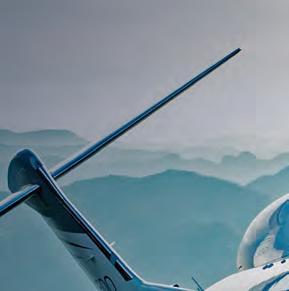








Follow our journey


















BY GORDON GILBERT
Ten fatal accidents involving U.S.-registered business turboprops and jets claimed the lives of 26 crew and passengers in the first nine months of this year versus 12 accidents and 42 fatalities in the like period last year, according to data compiled by AIN . In both comparable
periods, all fatal mishaps, except for three under Part 135, occurred under Part 91. The number of incidents also declined, and no accidents or incidents were reported under Part 91K fractional operations in the 2023 and 2024 nine-month time frames.
Textron Aviation highlighted the next iteration of the 560XL family, the Citation Ascend, at its NBAA-BACE static display in mockup form last month. Unveiled in May 2023, the Ascend has an array of major upgrades, including a Garmin G5000 avionics suite, a flat-floor cabin, and more fuel-e cient Pratt & Whitney Canada PW545D engines and autothrottles.
Options to partake in sustainable aviation fuel (SAF) were again available at Las Vegas airports for those arriving to and departing from NBAA-BACE last month. At Harry Reid International Airport (KLAS), Signature Aviation brought in supplies of SAF blend for the event. Atlantic Aviation o ered SAF credits via book-and-claim at its KLAS facility during BACE.
At NBAA-BACE 2024, Universal Avionics demonstrated a concept that resulted from its 2023 Grand Challenge to employees for innovative artificial intelligence (AI) solutions—an AI-driven system that uses external camera inputs, audio capture, and ADS-B In information to paint a picture for the pilot of the situation at the airport while taxiing. The AI system taps into Universal’s FAA-certified Aperture visual management system, which delivers video inputs and imagery to flight deck displays and head-up displays, including Universal’s SkyLens headwearable display. “We’re going to develop these functions, which are AI-based, and incorporate them into our di erent product lines,” said Universal CEO Dror Yahav.

With its large cargo door, quickly recon gurable cabin, and access to short, unpaved runways, the new PC-24 provides unmatched versatility.
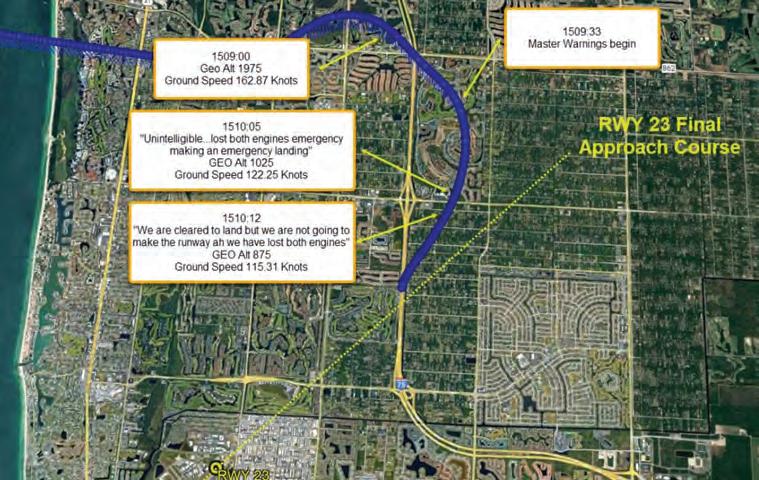
However, non-fatal accidents of U.S.-registered turbine business airplanes climbed to 24 in the first nine months of this year versus 20 in the first three quarters of 2023. Four accidents of U.S.-registered business jets during the first nine months of this year resulted in 11 fatalities.
The NTSB preliminary report on the February 7 fatal accident involving a Beechcraft Hawker 900XP sheds little light on what might have caused the twin-jet to descend seemingly out of control and crash near Westwater, Utah. The two pilots were killed in the Part 91 IFR positioning flight. The pilots planned to perform a stall warning and systems check en route.
Oil pressure warnings preceded the failure of both engines on the February 9 fatal crash of a chartered Bombardier Challenger 604 on a highway while on approach to Naples Municipal Airport in Florida. The two pilots of the Part 135 flight operated by Ace Aviation Services (doing business as Hop-A-Jet), were killed in the accident. The flight attendant and two passengers escaped with minor injuries.
On March 10, an Israel Aircraft Industries 1125 Westwind Astra was involved in a fatal approach accident at Ingalls Field Airport in Hot Springs, Virginia. The
airline transport pilot, commercial pilot, and three passengers were fatally injured. The airplane was operated by SkyJet Elite as a Part 91 IFR personal flight.
The pilot and passenger lost their lives in a Cessna Citation II when the twinjet crashed on takeoff August 20. It was on a planned Part 91 personal flight. Weather was day VMC. A pilot-certificated witness reportedly noted the aircraft’s engines sounded “unusual.” He said the airplane flew down the last one-third portion of the 5,003-foot long runway about 10 feet above the ground in a near level attitude before colliding with power lines and a restaurant building. The parking brake valve was found in the disengaged position.
In the first nine months, four people died in two non-U.S.-registered business jet accidents versus five deaths in two accidents in the same period of 2023. A charter flight on Jan. 20, 2024 was the one non-private fatal accident over the two periods. An air ambulance, Russian-registered Dassault Falcon 10 that crashed into a mountain in Afghanistan was attempting to make an emergency landing after running low on fuel, according to the Russian Interstate Aviation Committee. A 1978 twinjet was carrying two crew, two passengers and
two medical personnel. The crew and medical workers were injured, while the two passengers were killed.
On July 23, a 1975 Bombardier Learjet 35 crashed in a forest near Matupá, Brazil, during a go-around following a local flight. Investigative officials report the Brazilian-registered twinjet broke up and burst into flames on impact. In a preliminary report, the accident is described as a “loss of control in flight.” Both occupants died.
U.S.-registered business turboprops were involved in six fatal accidents in each of the first nine months of this year and last year. However, the number of fatalities decreased from 19 in the first three quarters of last year to 15 this year. Except for a Part 135 Pilatus PC-12 air medical crash that killed all five aboard in February 2023, the other 11 accidents in both time frames occurred under Part 91. Two of the 2024 turboprop fatal accidents happened while maneuvering for landing. The remaining four occurred while en route or descending for the approach. Non-fatal accidents increased from 12 to 14 year over year.
In the first nine months of this year, 45 people died in 11 accidents of non-U.S.-registered business turboprops compared with eight accidents and 28 deaths in the first three quarters of 2023.
Eleven people were killed in two charter crashes this year versus 23 who lost their lives in five charter accidents last year. Meanwhile, non-fatal accidents climbed from 13 last year to 24 this year. z


BY KERRY LYNCH

The last deadline for a comprehensive rule to transition to a fully electronic pilot records database (PRD) passed recently, calling on commercial operators to report historical training and other key data going back to 2005 and for fractional providers to 2010. In addition, the September 9 deadline marked the end of the transition, sunsetting the nearly 30-year-old Pilot Records Improvement Act (PRIA) as an alternative to the electronic PRD.
For operators in general, the rule presented a double-edged sword: the promise of easier access to records in a much faster timeframe, which is important as the industry continues its hiring spree. At the same time, it represented new, recurring, and deceptively complex requirements, some of which extended to a much broader swath of industry.
Issued in June 2021, the final PRD rule phased in the transition from the information- sharing requirements under PRIA to the new Part 111 Pilot Records Database, implementing an electronic format as required by Congress.
The PRD contains records from a pilot’s current and former employers, along with the FAA, with the idea that the database will not only provide important information about a pilot’s history but also prompt conversations between applicants and hiring employers. The agency won’t release the records unless the pilot candidates approve and then they are released only on a time-limited basis.
Unlike PRIA, which applied to air carriers under Part 119, the new rule reaches into
other segments of industry for the first time, including Part 91K fractional operations (although many already had their 135 certification); air tour operators; certain corporate operators; and public operators.
The final rule was published a little more than a year after a controversial notice of proposed rulemaking (NPRM) was released drawing some 800 comments, many from the business aviation community. Business aviation leaders in general protested the inclusion of corporate operators, the level of detail of records required, and most importantly a new attempt to define a corporate flight department as one that operates two or more aircraft requiring a type rating.
After reviewing the comments, the agency made a series of changes from the NPRM.
One key change was a reversal on requiring the upload of all records from most operators without a Part 119 certificate. Instead, corporate flight departments, air tour operations, and public aircraft operations are not required to upload training, most disciplinary, and separation from employment records to the PRD unless requested by a hiring operator. However, termination and certain disciplinary records are required.
Since operations without a 119 certificate do not have the same training and recordkeeping requirements, the FAA recognized that they would not be able to furnish the same level of detail. Further, the agency agreed that pilots in many of these operations do not typically jump to the air carriers, and as such, recognizing the same level of data upload would represent an unnecessary burden.
“NBAA stepped in and provided really detailed information to the FAA based on surveys and the response from industry, which actively participated in that process and indicated that the mandate was based on bad assumptions and it was going to cost a lot more than the FAA anticipated,” recalled Brian Koester, who recently joined Jetlaw after serving as director of flight operations and regulations for NBAA. (Koester spoke to AIN in his former capacity).
The exclusion of the smallest flight departments was good news, he added, as was the fact that business aircraft flight departments were only required to provide their detailed information when requested. “So that eliminated a lot of the need to proactively put information in this database,” he said.
Affected corporate flight departments are still those operating two or more aircraft requiring a type rating (either fixedwing or rotorcraft, the latter added in the final rule). However, the agency’s attempt in the original NPRM to formally define ‘corporate flight department’ drew so much criticism that the definition was dropped in the final rule.

For air carriers, the data required essentially remains the same. However, unlike PRIA, this rule is proactive, requiring carriers and fractional operators to update their records within 30 days of an event, such as training. Under PRIA, carriers simply furnished their records when requested. And if the operation is starting up with the PRD, those records still need to be uploaded within 30 days.
As far as obtaining those records, it is still required for air carriers, but also fractional and air tour operators. In a strange wrinkle in the rule, but one required by statute, affected hiring operators must obtain records going back five years. However, because Congress mandated this, air carriers must furnish historical records back to 2005 and fractional operations to 2010 (when Congress mandated the PRD).
Congress originally enacted PRIA in 1997 after a series of accidents attributed to pilot error. The National Transportation Safety Board (NTSB) had discovered in some of these cases that the pilots involved had a history of poor training performance or other indicators of faulty judgment, but their employers had not fully investigated the pilots’ backgrounds. Lawmakers wanted to ensure that air carriers were adequately conducting background checks on pilots and had access to key performance data. PRIA called for air carriers to access records from three sources—pilot employers, the FAA, and the National Driver’s Register— using standardized forms. Since the FAA’s role was limited, the agency didn’t issue regulations but provided guidance through an advisory circular (AC120-68G).
However, two accidents after PRIA was enacted prompted the NTSB to make further recommendations regarding pilot record-keeping, sharing, and reviewing.
One of these, in July 2003, involved Air Sunshine (d/b/a Tropical Aviation Services). An aircraft ditched into the Atlantic Ocean near the Bahamas after an in-flight failure of
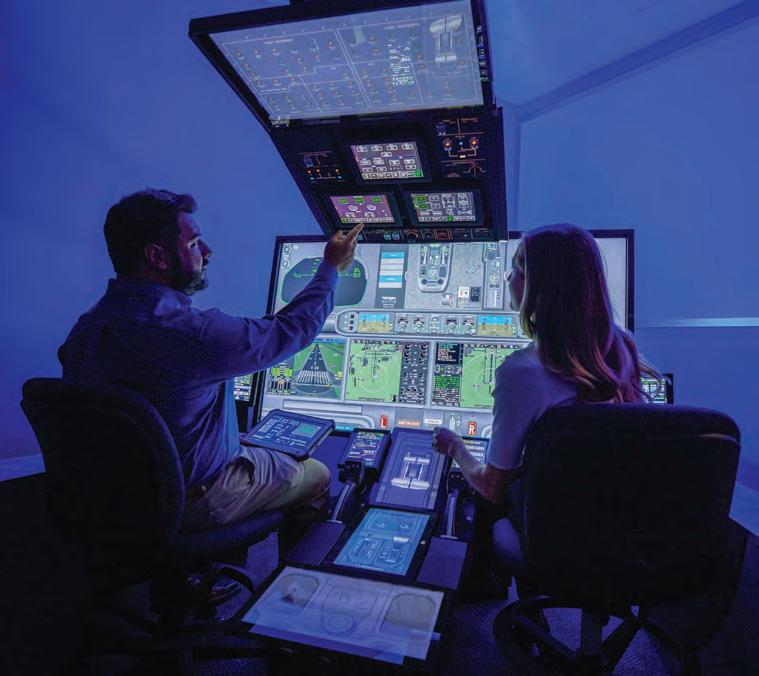
Air carriers and fractional providers have to update records within 30 days of a training event.
the right engine. Two of the nine passengers aboard the scheduled Part 135 perished after evacuating the aircraft.
While the NTSB identified the failure of the right engine as a primary factor, the probable cause also cited “the pilot’s failure to adequately manage the airplane’s performance after the engine failed.” The Safety Board further pointed to the pilot’s “history of below-average flight proficiency, including numerous failed flight tests, before the Bahamas accident, which contributed to his inability to maintain maximum flight performance and reach land after the right engine failed.”
The second accident, in February 2009, was the Colgan Air flight that spurred several changes in safety requirements. All 49 people aboard and one person on the ground died after the Part 121 flight crashed into a residence in Clarence Center, New York. The NTSB cited “the captain’s inappropriate response to activation of the stick shaker, which led to an aerodynamic stall
from which the airplane did not recover” as the probable cause and listed flight crew failures among the contributing factors.
In its investigation, the NTSB found deficient recordkeeping systems and analysis of flight crew qualifications at the airline, as well as training difficulties with the captain. As a result of its investigation, the NTSB called for all Part 121, 135, and 91K operators to retain electronic copies and provide pilot training records.
Among other actions in the aftermath of the Colgan Air accident, Congress enacted the PRD Act, mandating that FAA establish an electronic pilot records database. Ahead of the release of the PRD rulemaking, the FAA had already warned air carriers and fractional operators to retain their records in a 2011 Information for Operators. In addition, the agency already had begun the transition to electronic format. As for the rest of the transition, the agency established a series of compliance deadlines that began in 2021 with registration
requirements and the beginning mandate for air carriers to review records. Operators were required to submit new pilot records into the system beginning in June 2022, with the first tranche of historical information—dating to 2015—due in June 2023. The final milestone involved older records that were to be submitted by September 9.
“It has been a long and sometimes difficult process to switch over to the PRD, though we are encouraged that there have not been significant reports of problems from our membership [through] the final transition,” said NATA managing director of air charter Jenny Ann Urban.
This transition occurred as the pilot hiring process has become more efficient and continues on that trajectory, Urban added, noting that previous employer records are now readily available through one digital source. “From a pilot hiring standpoint, this transition should make everything smoother and allow for more reliable access to pilot records.”
However, she noted that the historical data requirement is problematic, especially for smaller carriers. “Small carriers in particular have experienced significant time and financial commitments related to the mandate to enter historic data dating back far beyond what is available to hiring carriers conducting pilot background checks,” she said.
Ideally, she added, the records requirement would have only gone back five years from when the PRD was activated—not when the congressional PRD Act took effect. “Unfortunately, the law passed by Congress didn’t give that flexibility. Regardless of the ability to access them, the historical records must still be reported as required,” she said.
NATA notes that the PRD website provides assistance, but some third-party companies also help with the upload of historical documents.
In addition, Urban further said, the benefits of the rule are tempered by the 30-day












































continual reporting requirements of current pilot records. “The shift to the continuous PRD record updates imposed by the regulations presents an ongoing, new burden on the industry.”
Thomas Benvenuto, senior v-p of flight operations for Solairus Aviation, described the inefficiencies of the system under PRIA and explained that the PRD concept has significantly improved. “Instead of everybody sending this paperwork backward and forward via snail mail or fax or other means, [the PRD stated] let’s have a government-sponsored database where the operator—with the pilot’s permission before they hire them—can get all these same records. Now, all these operators don’t have to go to all the individual operators that the pilot came from and request these records.”
However, Benvenuto conceded that getting up and running was an undertaking, so much so that he hired someone dedicated to entering pilot records. “The process of how to get those records into the system has been a somewhat arduous journey,” he said. “It’s taken us a few years now to get all our pilot records in because we have so many airplanes and so many pilots. We have a massive database of records that we had to essentially data entry into the PRD.” Solairus has more than 330 aircraft in its fleet throughout the U.S. and employs nearly 2,300 flight crew and personnel, both full-time and on a per-diem basis.
Each record takes time to upload, he noted, but added that once the process is established, it is more manageable. “I had to hire somebody to put in all the records because we didn’t have the bandwidth on staff to just spend hours and hours and days and days doing it.”
Even so, managing a large pilot population and constantly hiring for growth, Benvenuto sees upside. “Now we don’t have to wait for records.” This could be a 90-day process under PRIA. Now, he said, “You get it almost instantaneously as soon as that
pilot provides us the access to the records. So, the biggest issue is really managing the paperwork.”
Jennifer Pickerel, president of business aviation recruitment specialist Aviation Personnel International, noted that the topic has come up with clients. From their standpoint, she said, “the PRD is a positive change as it creates more accountability and transparency around a pilot’s technical performance. Instead of taking someone’s word on whether they’ve ever failed a check ride, we now have a way to verify.”
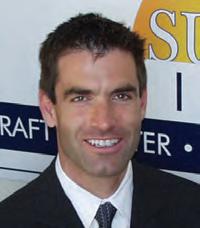
…let’s have a government-sponsored database where the operator—with the pilot’s permission before they hire them—can get all these same records.
— Thomas Benvenuto, Senior v-p of flight operations, Solairus Aviation
However, setting expectations upfront will be key to avoiding surprises, she added.
“That’s why we’ll be educating our candidates on how to make their records accessible through the PRD,” she said. “As it relates to quantifiable information—documentation of training records or accidents, incidents, and flight logs—it’s a great resource. However, if subjective data gets
into it then I think it could be problematic.”
“For Part 91 operators, the final rule came out well balanced,” Koester said. “However, for commercial air carriers, there are two sides of the coin here. The first was it provides better access, quicker access to information for them. That information will be available and provides transparency for the pilots. The pilots can go in and view their own records.”
However, the negative side was the historical information, he said. A lot of commercial departments may have had a system in place to discard anything older than five years.
“And so that one created a massive burden to input that information,” he said. It put some operators that didn’t have those records “in a bit of a bind,” Koester added. “They can’t input records that they don’t have. And so that was something we had to navigate.”
He noted that the FAA indicated it would not prioritize enforcement for those operators that try to make a good-faith effort to input the data. In fact, the rule mentions recognizing a “good-faith” effort.
Krister Genmark, chief commercial officer for Swedish-based aviation document manager Web Manuals, sees the PRD as another step into a more digital world in aviation.
“It’s encouraging to see the FAA recognize the efficiency of digitalization and data sharing when it comes to improving aviation administration processes,” Genmark said, pointing to potential safety improvements by having a central data repository that can complement other electronic tools such as safety management systems.
“This alignment promotes not only regulatory compliance but also operational efficiency,” he said. “The move towards an industry-wide digitalization, as evidenced by the adoption of the electronic PRD, highlights a broader trend towards digitalization and working with tools to enhance both safety and efficiency in aviation.” z

BY CURT EPSTEIN

The Montana Renewables refinery in Great Falls, Montana, has quickly grown to become one of the largest SAF production facilities in the U.S.
As the topic of sustainability looms larger in the psyche of the aviation industry, the question is no longer whether, but when. Fifteen years ago this month, the General Aviation Manufacturers Association (GAMA) and the International Business Aviation Council (IBAC) announced their Business Aviation Commitment on Climate Change (BACCC), establishing aggressive industry targets to improve fuel efficiency and reduce carbon dioxide emissions. In 2021, it was updated to include the business aviation industry pledge for net-zero carbon neutrality b y 2050.
To get there, the document laid out a four-legged plan of attack, consisting of technological advances in airframes and engines, improvements in air traffic control, market-based measures such as the purchase of carbon offsets, and lastly, the use of low-carbon alternative fuels.
Technologies such as electric propulsion, hybrid-electric, and even hydrogen-powered aircraft remain tantalizing visions of aviation’s future. However, still consigned to feasibility studies and test programs, such future advances at a viable commercial level remain on the distant horizon, as they each face yet-unsolved hurdles.
“With aviation, the idea of an electric or hydrogen-powered airplane is just a long way off. It’s anticipated that by 2050, because of the lack of viable commercial technology that’s going to become available and proven—even once it becomes approved, it’s going to take about 30 years to change the commercial aviation fleet over. So, there’s quite a long runway in that space,” said Scott Lewis, president of sustainable aviation fuel (SAF) producer World Energy’s net-zero services. He noted that without the use of SAF, aviation’s share of carbon emissions will rise from its current 2% to 25% by 2050.
SAF has long been recognized as the most immediate and effective solution for the industry in its quest to reach net-zero emissions. According to the BACCC, business aviation anticipates a CO2 life-cycle reduction of 40% in absolute terms from biofuels by 2050.
Sustainable aviation fuel is produced from an ever-growing array of feedstocks, with eight approved production pathways and 10 more under consideration. However, it is still in its infancy, especially compared with jet fuel production, which has a 75-year head start.
“SAF is the only thing available today that can fit with today’s aircraft and today’s airports with today’s infrastructure,” said Annie Petsonk, assistant secretary for aviation and international affairs with the U.S. Department of Transportation (DOT). “That is super important because today’s aircraft are still going to be flying tomorrow, 10 years from now, and potentially 20, 30, or 40 years from now. So, there will be a durable market for SAF going forward.”
Earlier this year, the International Air Transport Association (IATA) announced that its prediction of a tripling of worldwide sustainable aviation fuel production in 2024 was on track, with global production of unblended SAF expected to reach nearly 1.5 million tonnes. While an impressive-sounding amount, that equates to just half a percent of the total jet fuel the industry needs.
“SAF will provide about 65% of the mitigation needed for airlines to achieve netzero carbon emissions by 2050,” explained IATA director general Willie Walsh, adding that he is encouraged about the expected tripling of SAF output from 2023. “We still have a long way to go, but the direction of exponential increases is starting to come into focus.”
Three years ago, the Biden administration issued its SAF Grand Challenge to the U.S. fuel industry to reach a goal of 3
billion gallons of neat sustainable aviation fuel production a year by 2030, with longer-range goals of the complete replacement of petroleum-based jet fuel by SAF by 2050. In the intervening years, the industry has picked up the gauntlet.
“When we initially set it, there were a lot of discussions about whether that was too ambitious,” said Alejandro Moreno, an official with the Department of Energy’s Office of Energy Efficiency, speaking at the North American SAF Conference and Expo in September. “We are now on track at the low end to meet it and even exceed it.”
In 2021 when the challenge was released, the U.S. produced 5 million gallons of SAF. In the first six months of 2024 alone, that number has jumped to 52 million gallons as production facilities continue to come online.
IATA noted that more than 140 renewable fuel projects with the capacity to produce SAF are expected to be operational by
2030. If they reach their expected output rates, worldwide renewable fuel capacity could reach nearly 40 billion gallons by that date, and possibly more as demand will dictate the amount of investment in renewable fuel refineries and technology. With a three- to five-year time lag from planning and funding to operation of a new refinery, those expectations could even skew upwards in that time horizon.
“The interest in SAF is growing, and there is plenty of potential,” added Walsh, “but the concrete plans that we have seen so far are far from sufficient. Governments have to set clear expectations for aviation to achieve a 5% CO2 emissions reduction through SAF 2030 and to be net-zero carbon emissions by 2050.”
SAF’s environmental benefits do not come from how it is burned in engines; the emissions that are emitted from the tailpipe are virtually the same as those from jet-A. When producers or distributors

This chart illustrates the relative contributions to emissions reduction from four key areas: technology, infrastructure and operations, alternative fuels, and market-based measures. Carbon-neutral growth is achieved by 2020. Business aviation carbon emissions then stabilize and are projected to decline through 2050, at which point they reach 50% below 2005 levels in absolute terms.
highlight its benefits over conventional jet fuel, it is the life-cycle carbon emissions of sustainable aviation fuel that they are referring to. Rather than taking more carbon from the ground in the form of petroleum and releasing it into the atmosphere during combustion, SAF production uses renewable feedstocks such as waste fats, oils, and greases in the most common firstgeneration fuels available today.
With 80% of all SAF produced over the next half-decade expected to come via the HEFA production pathway using feedstocks such as used cooking oil, animal fats, and waste greases, IATA notes that accelerating the use of other pathways using feedstocks such as agricultural and forestry residue is crucial to expanding the potential for sustainable aviation fuel production.
Existing petroleum refineries can be used to co-process up to 5% of approved renewable feedstocks alongside the conventional crude oil content. IATA believes this solution can be implemented quickly, but it would require government policies to ensure consistent life-cycle carbon reduction assessments.
Indeed, the SAF Grand Challenge noted that synthetic fuels must deliver at least a 50% reduction in life-cycle greenhouse gas emissions compared to standard jet-A. The feedstocks contribute heavily toward this reduction with a focus on waste materials that would otherwise go unused.
At the World Energy plant near Los Angeles, for example, long strings of railroad cars filled with beef tallow constantly stream into the refinery, where they are steam heated, causing the fats they contain to liquefy for easy extraction, on their way to be converted into renewable fuels.
Other processes look to use municipal solid waste, forestry and agricultural residues, algae, oil seed crops grown on fallow or otherwise unusable agricultural land,

alcohols, and even hydrogen and carbon derived from the air itself, with the molecules broken apart with electricity and recombined into usable hydrocarbons.
Included among them is corn-based ethanol, which could become an abundant feedstock. “One of our regional conservation partnership projects funded by the Inflation Reduction Act (IRA) is working with a dozen ethanol plants to create a climate- smart supply of corn that will reduce the carbon intensity score of the feedstock and improve the ethanol quality for use in SAF,” said U.S. Agriculture Secretary Tom Vilsack, who addressed the September SAF conference via video.
At the conference, other less common potential feedstocks were highlighted, including biomass derived from industrial hemp, extraordinarily large sweet potatoes (dubbed “energy tubers”), and even milk waste products.
It is no longer enough to simply produce SAF. The fuel’s carbon intensity is now
a crucial consideration, with every step of the production process taken into account in the final environmental benefit calculation.
All agree the energy used in its production should be renewably sourced so as not to drag the carbon score down, and the further the SAF is transported from its production site, the more impact there is on its life-cycle carbon reduction. “Every gram of carbon emitted gets counted,” said World Energy’s Lewis. “Any time we can take a gram of carbon out of the total footprint, we’re going to be looking to do it.”
SAF is presently approved to blend up to 50% with conventional jet fuel. The most common blend ratio on the market is 30%, which yields approximately 24% in life-cycle emissions savings compared to conventional jet fuel.
Neat, 100% SAF is currently not approved for use due to the absence of aromatic compounds found in petroleumbased fuels. Those compounds interact with the gaskets in fuel systems, causing them to swell and seal the systems. One
airframer learned firsthand what that means when the fuel truck it acquired to handle neat SAF in its testing program developed leaks due to the absence of aromatics in the fuel. Modern aircraft and engines are being designed to handle neat SAF without the risk of fuel system leakage, and Gulfstream demonstrated this a year ago staging the first transatlantic flight on 100% SAF, followed a few days later by the first commercial 100% SAF flight.
New commercial jets are expected to remain in service for 30 years, and according to industry data provider JetNet, half the fleet of delivered business jets and turboprops are still in service more than four decades from initial factory delivery, so any fuel supply must be suitable for legacy aircraft as well. Though SAF producers are by no means capable of supplying pure SAF in significant quantities today, researchers are planning for the eventuality of it becoming a larger and larger fraction of the fuel component.
To restore those missing aromatics, a company has developed a plant-based
fuel additive. “That is crucially important because that is what enables this industry to move from the current requirement of only allowing 50% SAF in the engine to 100% SAF and relying on sustainable ingredients,” said the DOT’s Petsonk. “It’s a new market potentially for U.S. agriculture and also requires the fuel providers to work basically hand-in-hand with the aircraft manufacturers and the engine manufacturers.”
In the meantime, SAF is only available for business aviation at a relative handful of airports worldwide. In the U.S., they are clustered on the West Coast due mainly to the tax incentives a ff orded to producers from the low-carbon fuel standards enacted by states such as California, Oregon, and Washington. Earlier this year, Signature Aviation—which offers SAF at all of its locations in California and has pumped more than 40 million gallons of blended SAF since 2020—made the change to remove conventional jet fuel entirely from its FBOs at Los Angeles International and San Francisco

International airports, going entirely with SAF blends.
New Mexico passed legislation to establish a fuel standard of its own earlier this year, and similar measures are under deliberation in Minnesota, Michigan, Illinois, New York, Massachusetts, New Jersey, Pennsylvania, Vermont, and Hawaii.
William Hohenstein, a director in the U.S. Department of Agriculture’s office of energy and environmental policy, views this increased focus on carbon intensity as a major change in the industry over the past several years. “There’s clear linking of the production of the fuel and the carbon intensity, and that is embedded deeply in policy, whether that be what California does for the California Fuel Standard, or what we are doing at the federal level through tax credits. That’s really profound because it creates the potential to take every element of the life-cycle assessment of the fuel and look at that as an opportunity to mitigate.” The goal is the greater the carbon reduction, the higher the reward for the producers.
Those measures and their possible accompanying incentives will be critical to advancing the adoption of SAF as the industry expands its reach. In 2022, the first blended SAF was transported from Texas to the Northeast via the Colonial pipeline in a two-week, 1,500-mile journey that ended at New York’s LaGuardia Airport. In the words of SAF producer Neste U.S., “What we’re doing here is showing that just around the corner is a future where passengers at Atlanta HartsfieldJackson up to LaGuardia, JFK, and EWR can board a plane flying on SAF.”
The reach of SAF has expanded even further since then. Last month, World Fuel Services announced a two-year agreement with DHL Express for the delivery of blended SAF to Miami International Airport (KMIA). Over that period, World Fuel will deliver approximately 60 million
gallons of blended SAF, of which 18 million gallons will be neat SAF provided by Valero. It will be delivered into the KMIA fuel supplies and represents the largest commitment to SAF use thus far in the Sunshine State, as well as the first continuous deliveries there.
In July, Neste announced that it would supply 1 million gallons of blended SAF via pipeline to United Airlines at Chicago O’Hare International Airport through the end of 2024, representing the first major delivery in the Midwest. That move came in response to Illinois rolling out a new tax credit with every gallon of SAF purchased by air common carriers in the state earning a credit of $1.50.
“While the market for SAF is still in its infancy, there is a huge opportunity today for airlines and policymakers to work together to support its continued growth,” said United president Brett Hart. “SAF at O’Hare was made possible thanks to Governor Pritzker and the Illinois Legislature passing tax incentives.”
Those incentives are proving crucial to the development and adoption of SAF. At the end of this year, the Inflation Reduction Act’s (IRA) SAF blender’s tax credit will expire and be replaced with the Clean Fuel Production Credit (CFPC). It will o ff er the same credit amounts for SAF: $1.25 for each gallon of SAF in a qualified mixture.
According to the U.S. Internal Revenue Service, to qualify for the credit, the SAF must have a minimum reduction of 50% in life-cycle greenhouse gas emissions compared to conventional jet-A, with an additional one cent for each percent that the reduction exceeds 50% up to a total of $1.75 per gallon.
When stacked with state incentives, they make a powerful incentive for SAF producers. Yet the CFPC is due to sunset in 2027 unless it is renewed under the next administration.

SAF availability is limited to areas near production but is expected to grow.
“There is uncertainty about how the policies will be extended, whether they will be extended or not, and that provides market uncertainty,” said Zia Haq, senior analyst at the U.S. Department of Energy’s bioenergy technologies office, adding that these incentives are critical to the industry in terms of closing the gap between cost of production and cost of selling the fuel, a delta which is generally considered one of the major stumbling blocks in the widespread acceptance of SAF.
With investors and potential SAF producers looking to enter a successful, profitable industry, that can mean the difference between attracting project funding or not. “The Inflation Reduction Act and the tax credits have a limited timeline association with them and these investments in the biorefineries are big ticket timeline items that need longer certainty,” Haq said.
To further enhance the development of the SAF industry, the FAA in August handed out $291 million in grants under the Fueling Aviation’s Sustainable Transition (FAST) program, which was also established as part of the IRA in 2022. The SAF portion of the program accounted for $244.5 million in funding to support the
build-out of infrastructure projects related to SAF production, transportation, blending, and storage.
The eventual key to SAF is regional production, with the finished fuel produced in the vicinity of urban areas where it can be quickly and easily transported to airports.
The Minnesota SAF Hub—a coalition of more than 300 businesses, universities, cities, counties, and philanthropic organizations in the Minneapolis-St. Paul area— aims to establish the first large-scale SAF value chain in the U.S.
The group celebrated a major milestone in September with a commercial flight from Minneapolis-Saint Paul International Airport (KMSP) powered by SAF produced by Montana Renewables, from winter camelina, a locally-grown oilseed crop.
But until the paradigm of locally grown and produced SAF becomes a reality, the industry can rely upon book-and-claim processes, which separate the actual fuel from its benefits. Customers can purchase SAF (in reality, its environmental benefits) at airports far from available fuel deliveries. In keeping with the need to preserve the fuel’s carbon intensity scores by minimizing its transport, the actual SAF
would then be pumped into a different aircraft at an airport perhaps thousands of miles away.
“At some point, the scale would tip to where SAF is available at more airports,” said Madison Carroll, executive director for the Council on Sustainable Fuels Accountability. “That is the goal: that SAF really becomes ubiquitous and
accessible everywhere. Eventually, there would not be a need for book-and-claim because SAF would be the majority of the fuel available.”
Of the 23 billion gallons of jet fuel produced in the U.S. and supplied to the aviation sector, business aviation accounts for just 3% of that amount, yet according to Keith Sawyer, Avfuel’s manager of
While the proximity of the airport to the sustainable aviation fuel (SAF) production facility is a factor in the fuel’s emissions reduction score, one airport in the Northeastern U.S. plans to take that to an extreme, with its own on-field refineries.
Four years ago, Pittsburgh International Airport (KPIT) launched a study to identify factors that could prevent its functionality, and its energy needs emerged as a potential area of concern. In 2021, the facility became energyindependent, establishing its own electrical microgrid powered by solar and natural gasfired turbine generators.
It next turned its attention to the potential of loss of jet fuel access. “We’re not the people who produce fuel, but we thought maybe we could be involved in that,” said Chad Willis, director of planning and sustainability with the Allegheny County Airport Authority (ACAA) which operates KPIT. The ACAA reached out to the National Energy Technology Laboratory in Pittsburgh to conduct a feasibility study of what it would take to construct a SAF refinery on the airport, which runs through 75 million gallons of jet fuel a year.
“We’re in a unique position when it comes to airports,” said Willis at the North American SAF Conference in September. “We actually have about 9,000 acres of property, which is way more than most airports in the country. We also have the benefit of being a major hub for US Airways, which no longer exists.
alternative fuels, the sector last year used more than 10% of the SAF produced.
“Business aviation is sending a pretty significant demand signal to manufacturers and producers,” he said. “Now it’s a small portion versus an airline, but it is a reliable, predictable demand signal [to SAF investors] from these corporations and fixedbase operators.”

What that meant, though, was that we had overbuilt infrastructure.” At the airport’s disposal is 4.5 million gallons of excess fuel storage capacity.
In addition, KPIT possesses other intrinsic benefits of interest to SAF producers. “Our region is well connected from its industrial past,” Willis explained. “It has lots of infrastructure in place because of that. Our airport is right along the Ohio River, which has lots of barge access; we’re connected to fuel pipelines; and we’re also connected to rail.”
In May, the ACAA unveiled plans for the development of two SAF production projects on airport property. The first will use captured
methane to produce a syngas feedstock to produce more than enough fuel to fulfill the airport’s annual needs. The second similar capacity project will utilize biomass in the alcohol-to-jet process to produce another 75 million gallons or more of neat SAF a year, turning KPIT’s SAF producer partners into renewable fuel exporters, and leveraging the area’s transportation infrastructure.
A third potential SAF project under consideration on a nearby property would take waste oils, fats, and greases collected from sewage treatment facilities and convert them into SAF in a small-scale demonstration plant. The first of the projects could be operational by 2027. C.E
BY DAVID DONALD
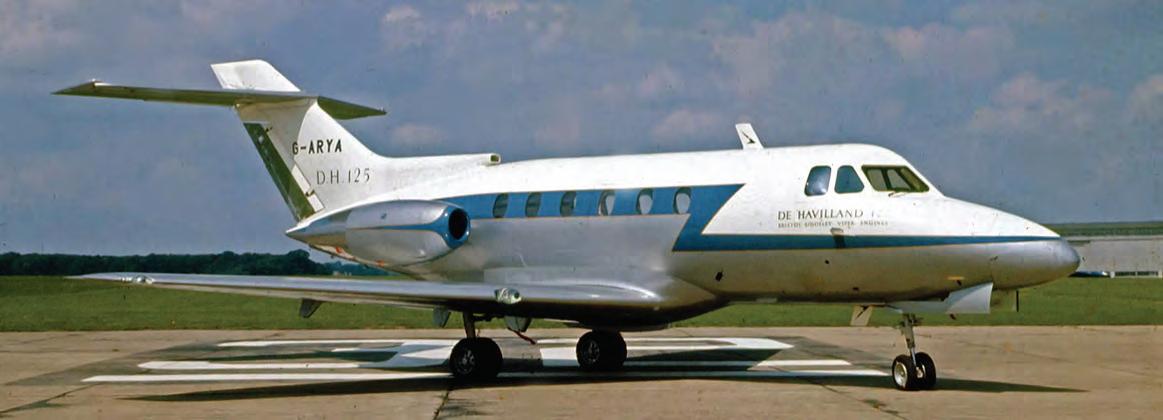
G-ARYA was the first prototype DH.125. The production aircraft incorporated numerous changes.
What began life as the de Havilland DH.125 Jet Dragon was a leader in the first tranche of business jet designs that emerged in the late 1950s and early 1960s. Like a number of its counterparts, it came to be known by a plethora of names and designations as the ownership of its design changed hands. Although no longer in production, the type—in its most recent Hawker 800/850/900 guises—remains an important part of the business jet scene.
One of the most famous names in UK aircraft manufacturing, de Havilland had begun building aircraft during World War I but had found popular fame in the interwar period with its Moth series of private aircraft. During World War II, many Commonwealth pilots learned to fly in Tiger Moth trainers, while the twin-engine Mosquito light bomber/fighter was one of the conflict’s most effective aircraft.
In the post-war period, the design team that had created the Mosquito went on to produce one of the UK’s greatest technological achievements: the DH.106 Comet, the world’s first jet-powered airliner. The same team also created the DH.104 Dove, a light
twin piston-engine airliner that became one of the company’s greatest post-war successes. Intended for regional carriers, the Dove found favor among the growing business aviation community, and several notable companies equipped their new corporate flight departments with the Dove. The type remained in production until 1967.
By that time, however, the corporate aviation sector was in the grip of a new revolution. In 1957, Lockheed flew its four-engine JetStar, and North American Aviation flew the Sabreliner a year later. While both types were initially designed to meet military requirements, they achieved success in the corporate aviation world. The business jet had arrived.
Spurred by the arrival of these two aircraft, and with a clear need to create a replacement for the Dove, de Havilland set to work in 1961 to design a twinjet aircraft that could meet the needs of companies and wealthy private customers. The result was the DH.125, which was initially given the name
Jet Dragon. That name, although it was dropped at an early stage, harkened back to the company’s successful Dragon and Dragon Rapide twin-engined biplanes.
With two 2,500-pound thrust Bristol Siddeley Viper 511 turbojets mounted on the rear fuselage, the DH.125 had a slightly swept wing that mirrored the planform of the wing developed for the Comet. The wing was a one-piece unit that was mounted below the fuselage, ensuring that the six-seat cabin area remained unobstructed. Double-slotted flaps were installed for good short-field performance.
The initial design featured a T-tail, but an additional fin area was subsequently added above the original. A ventral skid was added to provide some protection in the case of a wheels-up landing.
Two prototypes were built at Hawarden near Chester—also known as Broughton—which was the primary manufacturing site. The prototypes were assembled and completed at de Havilland’s Hatfield airfield, from where the first prototype DH.125 (G-ARYA) made its initial flight on Aug.
13, 1962. The second, sporting numerous changes and more equipment, took to the air a few months later, on December 12. Initial flight trials were encouraging; the DH.125 exceeded its design range of 1,000 miles by double the amount.
On Feb. 12, 1963, the third aircraft (G-ARYC) was flown. It was the first production-representative aircraft and the first to be completed and flown from the Chester site. It was longer and had greater wingspan than the prototypes, and in July 1963 it was handed over to Bristol Siddeley for testing of the production powerplant, the 3,000-pound Viper 520.
After undertaking numerous sales trips and demonstrations—including visiting 16 countries in a day in May 1964—the aircraft was subsequently employed as a shuttle between Filton and Toulouse during the development of the Concorde’s Olympus 593 engine. Today, G-ARYC is on display at the de Havilland Aircraft Museum at London Colney. The second prototype also survives with the Midland Air Museum at Coventry’s Baginton airfield.
Distinctive upper-wing fences were introduced on the second production aircraft, and a further six were produced to complete Series 1 production. Following were the Series 1A (for North America) and 1B (for the rest of the world). The main external difference was the reduction in
cabin windows from six to five to reduce cabin noise, while the aircraft also had upgraded 3,120-pound thrust Viper 521s.
Certified by the FAA on Sept. 25, 1964, Series 1A aircraft were ferried across the Atlantic with temporary avionics to two U.S. distributors(Atlantic Aviation and AiResearch) and a single Canadian distributor (Trimmins), which outfitted the aircraft to customer specifications. Altogether, 62 Series 1As were built and sixteen 1Bs.
Even before the DH.125 had flown, de Havilland had been swallowed up into the Hawker Siddeley Group, but it was not until 1964 that the type’s designation was officially changed to HS.125. That change did not apply in North America, however, where the DH.125 was by then well-known.
In 1963, the type notched up its first military sale, when the Royal Air Force ordered 20 aircraft for use as navigation trainers. Although designated as Series 2 production, they were essentially Series 1B aircraft but with six windows to port and four to starboard. They also had a ventral strake added below the fin. The first flew in September 1964, and the type began service in March the following year. In RAF use, the type was known as the Dominie T.Mk 1, and it operated until 2011.

An increase in mtow and 3,360-poundthrust Viper 522 engines were the main features of the Series 3, of which 30 were built. The 34 aircraft built as Series 3A/RA and 3B/RA had an additional 112 gallons of fuel in a ventral tank. Many Series 3s were re-engined with Garrett (later Honeywell) TFE731 turbofans.
Further weight increases and the installation of an outward-opening cabin door were introduced by the Series 400, of which 117 were built. From 1970, Beechcraft became Hawker Siddeley’s U.S. sales partner, and the aircraft was marketed as the Beechcraft Hawker BH.125.
Subsequently, the Series 600 marked a considerable development. The cabin was stretched to accommodate up to 10 passengers, with six windows per side, and the engine—by then a Rolls-Royce product— was the 3,750-pound-thrust Viper 601-22. Seventy were built, split equally between North America and the rest of the world.
At the time, the Viper turbojet was becoming obsolete, and a change to turbofan power was becoming vital. The result was the Series 700, which was to be Hawker Siddeley’s final development. First flying on June 19, 1976, the HS.125700 was powered by the Garrett TFE7313RH turbofan but was otherwise generally similar to the Series 600s. Production reached 215, of which 151 went to the U.S. and Canada.
In 1977, Hawker Siddeley became part of the merged British Aerospace conglomerate, and the HS.125 became the BAe 125. Production continued at Chester, as did development, now under the auspices of BAe’s Corporate Jets division. The first British Aerospace version was the BAe 125-800, which took to the air on May 26, 1983. It had a longer wingspan, a more streamlined nose profile, a redesigned curved windscreen, more fuel capacity, and 4,300-pound-thrust TFE751-5R-1H engines. It was notable for being the first business jet to feature an EFIS cockpit and was a runaway sales success.


While 125s had always been acquired in small numbers by the military for liaison/ VIP transport duties, the 125-800 was the first to spawn special-mission versions. The U.S. Air Force acquired the type as the C-29A to conduct the combat flight inspection and navigation mission. Japan bought a similar aircraft (designated U-125), as well as U-125As for long-range search-andrescue, equipped with APS-134 search radar and a large port-side observation window. The Republic of Korea Air Force acquired two RC-800 special-mission versions for reconnaissance and intelligence gathering. In the meantime, British Aerospace had introduced an intercontinental version, the BAe 125-1000. This had increased fuel capacity and a fuselage stretched by 2 feet, 9 inches that could accommodate up to 15 passengers. It first flew on June 16, 1990, on the power of 5,200-pound-thrust Pratt & Whitney Canada PW305 turbofans. Sales were sluggish, and only 52 were built.
In 1992, BAe announced a major restructuring that saw some of its major assets sold o ff. Among them was the Corporate Jets division. With its longstanding sales relationship with BAe, Raytheon (which had acquired Beech in 1980) was a natural buyer, and the 125 line became the property of the newly formed Raytheon Aircraft in June 1993.
While manufacturing of the slow-selling Hawker 1000 (125-1000) ended in 1997, the main prize was the hugely popular 125800—eventually the Hawker 800. Manufacturing continued in the UK at Chester, with near-complete fuselage and wing sections being transported to Beech’s Wichita facility for final assembly and completion. In 1998, a Hawker 800 became the 1,000th aircraft of the 125 family to be delivered.
Raytheon sold the business to Hawker Beechcraft in 2007, but not before new models had been launched. Powered by the 4,660-pound-thrust TFE731-5BR1H engine, the Hawker 800XP followed on from around 275 model 800s. Many were subsequently modified with Aviation Partners winglets, leading to the Hawker 850XP, an 800 with factory-installed winglets.
Announced in 2007 were the Hawker 750 and 900XP. The first was a low-cost, lightweight version with a revised interior and baggage pannier replacing the ventral fuel tank. It accounted for 48 aircraft. The Hawker 900XP was an 850XP tailored for longer-range and hot-and-high operations with modified avionics and TFE73150R engines.
Production abruptly ceased in 2013 with the bankruptcy of Hawker Beechcraft. Around 1,700 125/Hawker aircraft had been built by that time. While the reborn Beechcraft Corporation restarted building its turboprops, there was no intention to reinstate
business jet production as new owner Textron Aviation already had the Cessna Citation line. However, the company continues to provide OEM support for the Hawker line. With the ending of Hawker manufacture, the curtains closed on what had been one of the longest-running business jet production lines: DH.125-derived aircraft were built for more than 50 years. The Hawker 800 family continues to be a stalwart of the sector today with a healthy preowned market and upgrades such as Collins Pro Line 21 avionics available.
Beginning life as one of the “founding fathers” of the business jet scene, the DH.125 and its derivatives notched up several “firsts,” not least of which was being the first to introduce a glass cockpit.
A less welcome event was when a 125 became the first and only business jet to have been hijacked. This occurred in 1967 when an armed French agent took over the chartered aircraft carrying Congolese Prime Minister Moise Tshombe and forced it to divert to Algeria, where he was imprisoned. Another notable event occurred in August 1988, when a 125-800 carrying Botswana’s President Quett Masire was hit by an air-to-air missile fired by an Angolan MiG-23. The missile, which had been launched inadvertently, caused considerable damage, including the loss of an engine, but the BAe pilot flying the aircraft managed to land safely. z
BY MATT THURBER
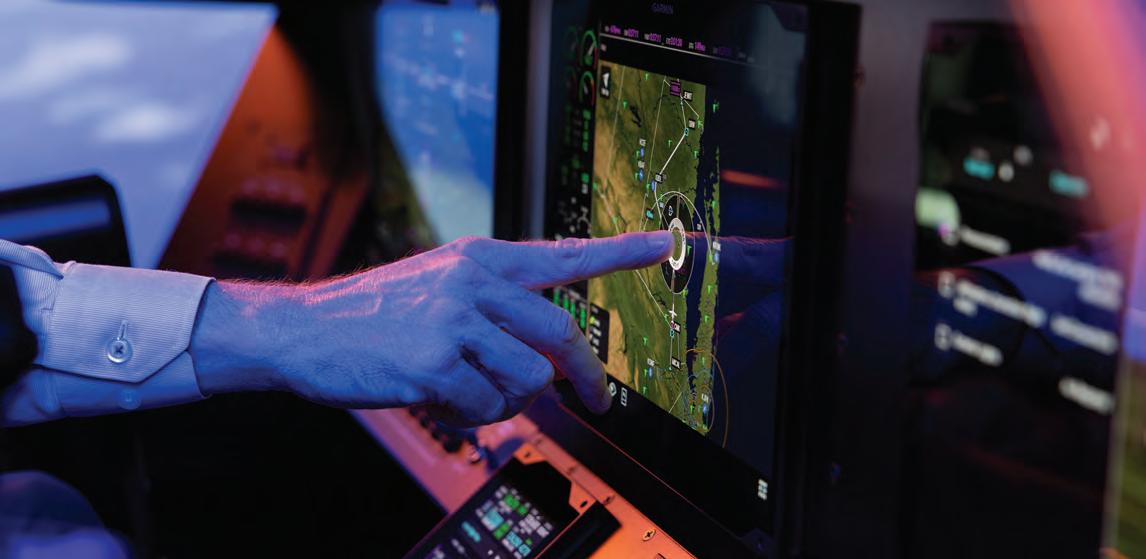
The radial menu is a new feature for G3000 Prime, making flight plan changes and information access just a
In a move that cements touchscreen displays as the primary pilot interface, Garmin introduced its technical standard order-certified third-generation flight deck, G3000 Prime. The Olathe, Kansas avionics manufacturer has already secured its first OEM customer for G3000 Prime, and deliveries of this Part 23 business jet will begin in 2025. The target market is Part 23 turbine, advanced air mobility, and commercial and military aircraft.
Garmin engineers and designers have been developing G3000 Prime for four years, and some influences came from a surprising source: Garmin’s G3X Touch for the experimental and light airplane market and the Garmin Pilot app. G3X contributed shallow menus and the shape of some touchable
areas, and Garmin Pilot shares its radial menu, now a key user interface feature on G3000 Prime’s moving map.
What this means for pilots is that Garmin is evolving from one of its signature interfaces, the infrared-based touchscreen controller in second-generation flight decks such as G2000 through G5000. Now G3000 Prime displays are fully touch-capable except for areas where the FAA doesn’t want touch to generate any action. Primary display attitude indicators, for example, are non-touch areas.
In fact, with G3000 Prime, there are no more Garmin display units, and they are referred to simply as primary display units (PDUs). In this first iteration of G3000 Prime, the primary displays are edge-toedge glass with 14-inch diagonal measurements, although they fit into a 12-inch
panel cutout. Likewise, the former Garmin touch controllers (GTCs) are replaced by secondary display units (SDUs), and these have 40% more screen area than the GTCs. Certain GTCs could be used as standby displays, as in Cirrus Aircraft’s SF50 Vision Jet, but now the secondary displays are all standby-capable, which eliminates the need for separate standby instruments.
“Edge-to-edge plays into the user interface,” said Jason Hewes, Garmin team lead of aviation human factors design. “It’s easier to swipe on a seamless piece of glass.”
Each of the PDUs can have multiple windows, and uniquely, more than one person can interact with a PDU or SDU at the same time. The capacitive-touch displays recognize when a hand is resting on the display and still allow fingers to manipulate the screen simultaneously, which makes
interacting with the displays easier in turbulence. Essentially, a hand and fingers on the display can be touching multiple buttons, but a button is only activated when it is touched and released.
There are no knobs on the SDUs, but there is a new Garmin control unit (GCU 315) under each secondary display with physical knobs and buttons. The GCU enables navigation through applications, zooming of windows, pane focus on the PDUs, and com tuning.
Autopilot controls are relegated to a familiar Garmin mode controller mounted underneath the glare shield. OEMs will have the option to install a cursor control device or for military aircraft, manipulate screens from hands-on throttle-and-stick controls.
All the options for connecting avionics for database, flight plan management, and other information-sharing purposes are available such as Garmin Connext and PlaneSync as well as FAA Datacomm, FANS 1/A, and SiriusXM weather.
“This is by far the most flexible, openarchitecture flight deck yet,” said Hewes. “We’ve taken all that we’ve already developed, and we’re building on that to add even more capability.”
To illustrate features of G3000 Prime, Hewes demoed a flight from Morristown, New Jersey (KMMU), to Boston (KBOS) in the simulator at a lab at Garmin’s Olathe, Kansas headquarters.
Navigating Prime is fairly intuitive if G3000/G5000 and even G1000 are familiar products. One major difference is that finding something that previously was buried in a menu requiring a few steps to access is now available right on the display. Any area that has rounded corners is interactive, Hewes explained. For example, the fuel information on the engine indication system (EIS) is enclosed in a rounded area, so touching that area pops up the fuel synoptic page. The same is true of the baro setting window, altitude window, et

cetera. This is a feature borrowed from the G3X Touch display, which has had this for a long time. “We’re bringing that goodness into [Prime],” he said.
Perhaps the most convenient new feature is the linked view. When I change something on the SDU, I can touch a linked view button and that will display a preview of the change on the PDU. This comes in handy when previewing an arrival procedure at the destination and looks almost exactly the same as the select arrival feature on the map in the Garmin Pilot app. The other major user interface change is the radial menu, which pops up when touching the moving map. The radial menu gives context-sensitive graphical menu options.
Like most modern avionics displays, G3000 Prime allows pilots to set up various windows in each PDU, but the presets can be selected for each phase of flight, including taxi. Hewes likes to set his PDU with a primary flight display and a smaller window of EIS, then the center PDU with a full moving map, and the other pilot’s PDU as a full primary display. Presets can be locked down for fleet operators so pilots have a consistent look and feel as they switch between airplanes.
The SDU is where most of the planning action happens, and its quick access bar
or apps drawer provides buttons for typical features including FMS, connections, aircraft systems, and settings and tools. A “hamburger” menu (the common three-line interface from consumer electronics) offers other functions. The menu is contextual, so it offers up functions based on the configuration of the airplane. “We tried to create shallow menus to make you not look down as much,” he said.
Instead of moving the user from app to app, G3000 Prime has just one app for initialization, with tabs for the required information. After the setup tab, which shows database status, the next tab is for selecting a pilot profile. Next comes the flight plan, which can be imported from a tablet computer, including remotely via PlaneSync, or manually entered. I plugged the information into the SDU, starting with origin and destination, then a waypoint. At this point, a button labeled “route” popped up and that allowed me to continue entering route information such as an airway without closing the keyboard, so inputting more route information was faster.
At this point, I could look at the linked view to see the entire route, each segment, and weather overlays to get more familiar with the plan and make sure it’s correct. With an asterisk remaining in the setup
tab, we added a cruise altitude to finish that task. Next was weight and balance, and this shows up in a linked view so adding, removing, or moving people or stuff around can be done graphically.
Garmin added new features for calculating takeoff and landing data and now calls it TOLA for takeoff and landing assistant, instead of TOLD (takeoff and landing data). After inputting the required takeoff distance, TOLA shows us graphically Runway 5 with the required distance highlighted.
“This is our briefing tool,” Hewes explained. “You’ll see that that’s going to take us right about the crossing runway [at Morristown]. We’ll have that 4,000-foot margin, and we’ve got a little bit of a tailwind from the right corner, and the heading will be 048. We have 182 feet field elevation, and the runway slightly slopes up. This is a good briefing tool to get you oriented to what we’re doing on takeoff.” We set flaps-15 for takeoff and accepted the recommended V-speeds.
A new feature for G3000 Prime is emergency return as an alternative plan in case something bad happens after takeoff. Pilots can plug in an appropriate airport and runway to land at if there is an emergency right after takeoff, then activate the return with the press of a button, and G3000 Prime will set the V-speeds and load the approach. Pilots can review the emergency return plan in a linked view. “All we have to do is just tell ATC what we need to do,” he said.
Once we accepted the initialization, in the flight plan there is an options button next to our departure airport where we can pull up airport information. Here I could tap each desired frequency and tell Prime where to put them (ground active on Com 1, tower to standby, et
cetera). If the tower has times when it is closed, that information is shown, and this is a new feature for Prime.
A new feature is taxiway routing, where the pilot can select a destination at the airport and Prime selects a taxi route, graphically depicting on the synthetic vision display hold-short lines on crossing runways.
Checklists are linked to crew alerting system (CAS) messages, with the level of integration depending on the airframe manufacturer’s choices. Hewes demonstrated an engine control fault CAS message as we flew along. Touching the message pulled up the necessary checklist, with the first item to turn on being antiice. The display showed the switches so we touched those, then check-marked the checklist. Next was resetting the Fadec. An icon above that item had a link, so I touched that and it opened a synoptic page for the engines where I could press reset buttons for both engines. Finally, the checklist asked for CAS message status. As the message had cleared, we were told the anti-ice was no longer needed, so we switched those off.
Features that were buried in deeper menus in G3000 are easier to access in Prime, such as the environmental control system page. Once pulled up, changes can be made simply by touching areas on the page. On the moving map, a details slider changes the level of detail shown.
Approaching Boston, we used the linked view to brief the arrival and approach. Hewes showed me how Prime does the same for landing as for takeoff, with the graphical linked view of the runway, our landing distance, and what the runway environment is going to look like. An update button indicated that the current Metar was available, and touching that incorporates the latest weather information for the destination.
If an airframer is interested, Garmin will offer Prime for the Part 25 market. Behind the instrument panel, most hardware—integrated avionics units, servos, and sensors—is the same, with the major difference being the touchscreen displays. However, there are new features such as an Arinc 653 LRU that allows third parties to develop applications for G3000 Prime and another new LRU for electronic circuit breakers and secondary power distribution, including automatic load-shedding.

G3000 Prime is Garmin’s third-generation flight deck since G1000 was introduced in 2004, and there are many more features available in Prime, some of which will be optional for airframers to pick from.
While G3000 Prime is Garmin’s most sophisticated avionics suite, the company has no plans to halt development of its current integrated flight deck stable, from G1000 NXi to G3000 and G5000, according to Hewes. “We plan to continue and innovate and support those for the long term.” z
BY MATT THURBER

In a September 3 letter of interpretation, the FAA clarified that the term “in person” in Part 43 maintenance regulations means that remote supervision of aircraft maintenance is forbidden. This could have a profound effect on the aviation maintenance industry because the letter essentially supports a requirement that a supervising mechanic must watch every move made by a non-licensed individual performing maintenance in person.
A request for reconsideration was submitted to the FAA on September 24,
citing “irreparable harm” that the interpretation will cause to MRO facilities that employ non-certificated mechanic trainees or apprentices.
The request for interpretation was submitted by Jonathan Moss, manager of the FAA’s Flight Standards District Office in Little Rock, Arkansas. Moss asked “whether a supervisor must be physically present at the site of the maintenance, or if he may supervise remotely, through Zoom, FaceTime, live feed TV, photographs, downloadable video, or other
electronic means. Assuming remote supervision is allowed, [he] then asked if the supervising mechanic would be allowed to provide the documentation for return to service electronically.”
The applicable regulation is FAR 43.3(d): “A person working under the supervision of a holder of a mechanic or repairman certificate may perform the maintenance, preventive maintenance, and alterations that his supervisor is authorized to perform, if the supervisor personally observes the work being done to the extent necessary to
ensure that it is being done properly and if the supervisor is readily available, in person, for consultation.”
According to the FAA letter, “The Office of the Chief Counsel finds that the phrase ‘in person’ explicitly requires physical presence. Virtual presence, through a live video feed or other technological means, cannot replace the physical presence of a supervising mechanic. The term ‘in person’ is typically used to distinguish physical presence from mere virtual or remote presence, e.g. ‘Are we meeting in person today?’ Interpreting 43.3(d) to allow supervision by Zoom or FaceTime would render the phrase ‘in person’ redundant, but all parts of binding legal text must be given effect.”
Citing previous rulings, the FAA letter concluded: “In other words, mechanics must be able to physically intervene at every step of the process.” Thus, “A live video feed does not allow for this level of supervision. A remote supervisor cannot take over maintenance and can only see what the camera is pointed at. Anything out of frame will go unnoticed by even the most experienced mechanic.
“In the best-case scenario, a remotely supervising mechanic would be available for questions at any time and could remotely observe most steps of the work, but crucial details might remain out of frame and the supervisor would have no power to step in if necessary. That bestcase scenario still would not be enough under 43.3(d).”
Because the use of remote supervision is not allowed, according to the FAA, the question of providing return-to-service documentation electronically isn’t applicable to this situation and therefore isn’t addressed in the letter of interpretation.
In the request for reconsideration, Mike Busch, an A&P mechanic with inspection authorization and president of maintenance consultancy Savvy Aviation, and other signers of the letter pointed out what they feel are flaws in the FAA’s reasoning in the letter of interpretation.
The conditions in the Part 43 regulation require, he explained, “proactive supervision by the supervisor in order to ensure that the work is being done properly, while the second condition addresses the supervisor’s reactive availability in the event that the person being supervised needs to consult with the supervisor in the course of doing the work.
“For the past 60 years, certificated mechanics who supervise uncertificated apprentices (including we, the undersigned) have universally understood the condition (a) phrase ‘personally observes the work’ to mean that the proactive obligation of the supervisor could not be delegated to anyone else, and the condition (a) phrase ‘to the extent necessary to ensure that it is being done properly’ as giving the supervisor broad discretion to determine precisely how much supervision is necessary, and what phases of the work require supervisorial scrutiny.
“The condition (a) phrase ‘personally observes’ has never been understood to require a specific time duration of physical proximity on the part of the supervisor. Rather, it has been universally understood that the supervisor has broad discretion over both the timing and duration of supervisorial observation of the work and the physical proximity necessary to ensure the work is being done properly.”
In any case, he added, the supervisor has an incentive to ensure the work is done properly because the supervisor is the one signing o ff the work and approving it for return to service. “Indeed, it is the supervisor who will be held responsible for any adverse consequences if the work was not performed properly, both in terms of possible FAA certificate action and potential damages for civil negligence.”
The maintenance industry has long understood the regulation’s “readily

available, in person, for consultation” phrase to mean that an apprentice could ask a question for assistance and that the supervisor must be readily available. “The words ‘readily available’ have never been understood to mean ‘instantly available’ or ‘continuously available.’
“Such consultation can frequently be handled satisfactorily via phone call or text message (e.g., ‘should I apply sealant to the cylinder base O-ring?’), but there are certainly times when the supervisor’s physical presence is necessary (e.g., ‘hey boss, I think you’d better have a look at the threads on this through-bolt before I continue’), in which a supervisor’s physical availability response time measured in minutes or perhaps hours would be considered to meet the ‘readily available, in person’ requirement of condition (b). Again, the supervisor typically has a strong incentive to be reasonably available in the event the apprentice feels the need for either remote or in-person consultation in order that the apprentice’s progress and the facility workflow is not unnecessarily disrupted.
“We believe this to be an unfortunately conservative and regressive interpretation of the meaning of ‘personally observe’ and probably not what the original authors of this rule would have intended the phrase to mean had they been able to foresee that 60 years in the future virtually every adult human would be carrying a high-definition camera that was able to instantly transmit still and video images to any other adult human on the planet at the speed of light. We think the rule authors intended the phrase ‘personally observe’ to denote that the supervisor may not delegate his obligation to observe the work being performed, not to dictate any particular methodology of observing the work.”
The request for reconsideration points out that in modern life, remote activity is common, from remote robotic surgery to telemedicine and warfare, as well as in ordinary work situations, which include
many FAA personnel working remotely. Sarah MacLeod, executive director of the Aeronautical Repair Station Association, explained that the FAA has already supported remote technology in many areas: “Once the agency accepted (and approved) borescope inspections, it embraced the concept of remote technology.”

MIKE BUSCH PRESIDENT, SAVVY AVIATION
...Such consultation can frequently be handled satisfactorily via phone call or text message (e.g., ‘should I apply sealant to the cylinder base O-ring?’), but there are certainly times when the supervisor’s physical presence is necessary...
The Busch letter goes on: “If the original authors of [FAR] 43.3(d) were willing to grant the supervisor responsibility and authority to determine ‘the extent necessary to ensure the work is done properly,’ wouldn’t it logically follow that those same original rule authors would also be willing to grant the supervisor responsibility and authority to determine the
appropriate method for exercising that supervision, including the use of available technological means? We are convinced they would.”
The consequences of the Moss interpretation will have a profound effect on maintenance providers, according to Busch. Repair stations that employ non-certificated technicians would have to employ a certificated mechanic to work oneon-one full-time with each person they supervise, which would be economically unfeasible. The practice of owner-assisted annual inspections and maintenance would become untenable due to the need for a mechanic to work 100% of the time with the aircraft owner.
“Given the present acute shortage of certificated mechanics, particularly in general aviation, it would be extremely unfortunate to put an end to the ability of repair stations and other maintenance facilities to employ mechanic-trainees who are working to gain the experience necessary to obtain A&P mechanic certification, and to put an end to owner-assisted annual inspections and other owner-performed maintenance under A&P supervision,” Busch wrote.
In concluding the request for reconsideration, Busch and others who signed the letter, asked the FAA to revise the interpretation and restore “a supervisor’s discretion to determine the extent of supervision necessary to ensure that the work being supervised is done properly, discretion that has been eviscerated by the Moss interpretation. We also request reconsideration of the Moss interpretation’s total ban on using electronic means by a supervisor to satisfy the 43.3(d) requirement to ‘personally observe’ the work performed.
“In short, we request that AGC-200 withdraw the Moss interpretation or amend or supersede it with an interpretation that conforms with the plain-language meaning of 43.3(d) as it has been universally understood throughout the industry for the past 60 years.” z
BY HANNEKE WEITERING

CAE’s AI-based training tools are helping facilitate the
Artificial intelligence (AI) is disrupting every facet of the aviation industry, and the technology is poised to completely change the way aircraft fly. While pilotless passenger flights on self-flying, AI-powered airliners won’t become a reality anytime soon, AI technology is already creeping into airplane flight decks and transforming how pilots do their jobs—and how they learn to fly.
A handful of companies developing AI-driven flight control systems are already flying autonomous aircraft experimentally, but AI isn’t piloting any aircraft yet. Rather, autonomous airplanes being flown today by companies such as Xwing, Reliable Robotics, and Merlin rely on enhancements to existing autopilot technologies and remote-piloting capabilities. Using
Cessna Grand Caravans as testbeds, those companies aim to convert existing legacy aircraft into autonomous aircraft under supplemental type certificates (STCs).
“Autonomy is not necessarily equal to artificial intelligence, or machine learning, or deep neural networks, or non-deterministic systems or anything like that. Autonomous machines can be perfectly deterministic,” explained Honeywell Aerospace’s Stephane Fymat at the Vertical Flight Society’s 10th biennial autonomous VTOL technical meeting. “That’s good, because it means that the certifiability of autonomous aircraft can be a more tractable problem, especially considering some of the deeper challenges that we’re addressing right now around the explainability of AI, trust of AI, the generalizability of AI.”
Air safety regulators such as the FAA and the European Union Aviation Safety Agency (EASA) currently have no set path to certification for aircraft that fly themselves with AI. However, that’s something both agencies are looking to change in the not-too-distant future.
EASA and the FAA have both published their own AI “roadmaps” in which the agencies spell out similar approaches to certifying AI. In EASA’s AI roadmap, a “living document” last updated in 2023, the regulator said it expects fully autonomous AI aircraft to enter service in the 2035 to 2050 timeframe—yet it expects to certify its first AI avionics system as early as next year, or perhaps even sooner.
According to EASA’s roadmap, initial applications for AI in the cockpit will center around pilot assistance, helping to reduce pilot workload and improve safety. Over the next decade, progressively more automated solutions will enable reducedcrew or single-pilot operations—maintaining a human in the loop—and by 2050, AI could be flying aircraft without any human supervision.
The first AI-powered avionics system appears to be on track for EASA certification even before next year as stated in the roadmap. Swiss AI start-up Daedalean is working on an STC for an AI-powered pilot assistance system called PilotEye, which it hopes to certify by the end of the year.
Developed in partnership with U.S. avionics manufacturer Avidyne, PilotEye uses cameras, sensors, and AI software developed with machine-learning algorithms to provide pilots with complete situational awareness plus detect-andavoid capabilities. The company refers to its computer vision technology as “situational intelligence” because it “encompasses situational awareness as well as the ability to anticipate and react to a threatening situation.”
PilotEye uses AI and neural networks to analyze images and data from various cameras and sensors to accurately perceive its surroundings. “You don’t need
AI for decision-making; you need the AI part for seeing that it’s a runway and not a road and that it’s actually going the way you wanted to land on,” Daedalean founder and CEO Luuk van Dijk told AIN.
The AI-enabled computer vision software can accurately identify objects and obstacles to determine, for example, whether a camera has spotted “a cloud that’s not actually moving, or there’s an airplane that’s coming right at you,” he explained. “These are a couple of the harder problems.”
Avidyne intends to offer the PilotEye as a feature in the Quantum avionics suite it launched last year specifically for new advanced air mobility aircraft, such as eVTOL air taxis and hybrid-electric regional airplanes. Daedalean is also developing an AI flight planning system that integrates with an aircraft’s autopilot and enables autonomous navigation. This would ensure an aircraft can safely travel through designated corridors, such as eVTOL air taxis flying at low altitudes in urban areas.
“Things such as the ability to perceive or localize the aircraft in the world, the ability to interact perhaps with ATC using natural language (as much as we would all like it to go to data), the ability to help an aircraft plan complex courses of action on the fly in novel situations, and the ability to learn from the world also might make the system

less brittle, and less expensive potentially to build or maintain,” Fymat explained.
Although totally AI-piloted aircraft may not enter service for several decades, some AI technology is already flying on aircraft today— just not with the power to control the aircraft. So far, the focus of AI on aircraft has revolved around improving operational efficiencies.
For example, flight management systems use AI algorithms to optimize routes and reduce fuel burn. Generative AI can also help to automate routine tasks. In October, Turkish low-cost carrier Pegasus Airlines introduced AI-generated pilot announcements that provide passengers with flight information in several languages, allowing pilots to stay focused on flying.
Earlier this year, Swedish company Web Manuals launched a new AI-powered search tool for pilots’ flight manuals. Called Amelia AI, the platform functions as a chatbot that pilots can use to quickly retrieve information from within their flight manuals, allowing them to make swift and well-informed decisions.
Web Manuals’ AI search function “makes navigating through large amounts of operational and company manuals much more manageable and time efficient, with data retrieval within seconds,” said the company’s chief technology officer, Richard Sandström.
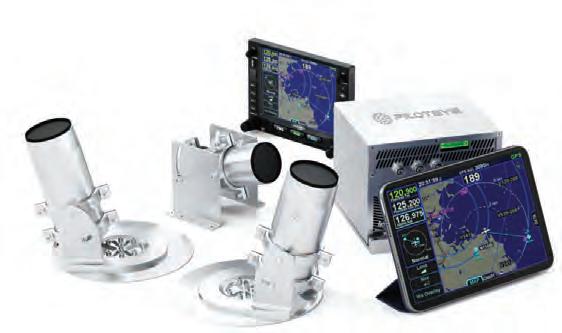
Researchers are also experimenting with AI-driven face and voice recognition software that could potentially monitor pilots’ health and mental well-being. Blueskeye AI, a U.K.-based software company, uses facial recognition and voice analysis software “to look at medically and biophysically relevant behavior, so we can use it to help assess, diagnose, monitor, and treat medical conditions that actually change your expressive behavior,” such as fatigue, pain, and anxiety, Blueskeye AI founder and CEO Michel Valstar told AIN.
When it comes to AI, the aviation industry (along with the rest of the world) is only beginning to understand the wealth of possibilities the technology can offer. While AI is changing the way aircraft and pilots fly, it’s also changing just about every aspect of ground operations, ranging from flight booking platforms to supply chain management.
Flight schools already have initiatives underway to use AI technology to make pilot training more efficient, effective, and accessible. At the forefront of those efforts is CAE, a global company that manufactures flight simulators and other training devices for airlines and flight schools.
CAE is developing AI-driven tools that can provide personalized training experiences by analyzing a student pilot’s performance and tailoring training plans to every individual’s specific needs.
“For future learning ecosystems to be successful, training providers must find ways to smartly blend the incredible advances we’re seeing in education technology with the latest understanding in learning science,” said Regan Patrick, CAE’s chief learning officer. “It’s important for CAE to understand what cognitive, behavioral, and neuro science tells us regarding how humans learn so we can carry that forward into our training systems designs.”
According to CAE, its patented adaptive learning technology makes training more efficient and cost-effective. It implements

International, which is also developing AI-powered adaptive learning capabilities. In 2019, FlightSafety and its partner IBM announced plans to introduce a platform called FlightSmart that uses AI to improve training processes.
“The product, through the collaboration with IBM, is utilizing advanced algorithms, machine learning, artificial intelligence— all of those cognitive technologies—to provide the objective evidence or objective evaluation of the student’s performance,” said Matt Littrell, FlightSafety product director of AI and adaptive learning.
systematic and objective rule-based measures of performance, providing instructors and students with real-time feedback. With an integrated biometric suite, instructors can gauge students’ stress, engagement, and cognitive workload.
“One of the biggest challenges we see is the need to adjust mindsets, specifically migrating from traditional instructor-based training approaches to more studentcentric experiential learning,” Patrick said.
CAE has also been using AI for years to enhance its flight simulators, enabling a broader range of realistic and dynamic environments and scenarios, including events that could catch a pilot by surprise.
CAE and other flight training companies are integrating several other cutting-edge technologies into their training products, including virtual reality, mixed reality, and data analytics. CAE’s virtual-reality training hardware includes headsets and hand-tracking technology. According to CAE, combining those types of tools with artificial intelligence will further expand the horizons for extended reality training.
Another leader in AI-enhanced flight training solutions is FlightSafety
FlightSafety is working to integrate FlightSmart with flight simulators as well as other training processes, including task training on avionics and operating flight management systems, the use of automation, standard operating procedures, crew resource management, and maintenance.
During simulator training, the AI software monitors more than 4,000 variables in real time, objectively evaluating a student’s performance in specific maneuvers. It also distinguishes between different flying styles, which FlightSafety’s team has classified as either shy, reactive, risk-taking, or aggressive. The technology is capable of picking up nuances that instructors may not be able to directly observe, like how much force a student pilot is applying to the controls, for example.
So far, use of the FlightSmart system has been limited to military operations. For its first use case, FlightSafety implemented the technology on 16 T-6A training devices at a U.S. Air Force base in Columbus, Mississippi. It completed acceptance testing in 2020. Now FlightSafety continues development work to refine the system and optimize the interface design.
FlightSafety aims to make FlightSmart available for civilian pilot training next. Eventually, the technology could expand to help train other types of aviation professionals, including maintenance technicians and drone operators. z

The first prototype of the fourpassenger Nexus eVTOL aircraft is coming together at Textron eAviation’s Wichita, Kansas headquarters.
BY MATT THURBER
In a building called the Glass House next to McConnell Air Force Base in Wichita, Textron’s eAviation division is forging ahead with construction of the first Nexus eVTOL aircraft. The 35-foot-long backbone of the wing—one of the largest composite parts the company has ever made—is being assembled on a jig and the fuselage unveiled earlier this year is taking further shape although separately from the wing.
Textron eAviation is leveraging the skills of experts at its sister companies to build not only the first Nexus but also the infrastructure needed to support the program. This includes Textron Aviation and its McCauley Propeller subsidiary, as well as parent Textron’s Bell and eAviation’s Pipistrel division, along with various internal resources and machinery. For example, the autoclave in which the airframe’s composite parts are cured was originally installed for the Beech Starship airframe and Premier 1/1A and Hawker 4000 composite fuselages.
Pipistrel is contributing batteries, battery management systems, and charging technology that will use the CCS1
(Combined Charging System 1) protocol for the U.S. and CCS2 in Europe.
The program is also tapping Bell’s expertise in tiltrotor design and fly-by-wire flight controls. Now Nexus is bringing all these together to create an electric flying machine that could pave the way to an era of sustainable flight.
It is only when seeing the hardware that one appreciates how big the Nexus is; its footprint extends to about 50 feet fore and aft and side to side. This is no small lightweight aircraft, and it will take a considerable amount of power to lift it vertically into the air—namely 2,000 pounds of liquid-cooled batteries mounted inside the wings. (The Pipistrel Velis Electro uses liquid cooling for its in-house-developed battery system.)
These batteries will power four forwardtilting motors fitted with McCauley fourblade propellers—one on each wingtip—as well as two tilting motors mounted on the forward end of a boom on either side of the cabin.Two other electric propulsion units oriented for lift balance out the back of each boom, and these aft proprotors are Bell designs, for a total of six propulsion units.
Each McCauley propeller is about 12 feet in diameter, the largest ever built by the company and the same diameter as the Bell proprotors. The booms are joined in the rear by the V-shaped empennage, which is designed to minimize vibration, according to JD Terry, Textron eAviation’s director of engineering.
While the fuselage employs carbon fiber as a composite outer skin, some aluminum bulkheads are used where appropriate. Textron eAviation isn’t using the fiberplacement machines that wound material onto a metal form to manufacture Premier and Hawker 4000 composite fuselages. The wing is all-composite and will extend to about 50 feet once the tilting propulsion units are installed. Wichita State University’s National Institute for Aviation Research (NIAR) assisted with construction of the wing.
With Textron Aviation’s longtime reputation for conservative yet practical aircraft design, it’s no surprise that entry into service of the Nexus isn’t scheduled in the near term. “I think we’re very pragmatic about this space,” said Textron eAviation president and CEO Kriya Shortt. “Our plan
for entry to service would be in the 2030s, which we think is the culmination of technology, of the regulatory environment, and of the market itself.”
Capable of carrying four passengers and one pilot up to 60 miles with the current battery system, Nexus will—like all of Textron Aviation’s products—be available for whatever use case the customer desires.
This could be an air taxi business model, air ambulance, or for special missions and military uses, Shortt acknowledged. The cabin interior has more cabin volume than a Cessna T206 single-engine airplane, according to Terry, although the overall airframe footprint is larger.
“We want to have a vehicle that is multi-mission-capable, that answers the needs of our customer base,” said Shortt. “One hundred plus years of experience across the Textron business units in the aerospace sector gives us the opportunity to make sure that the product is going to have broad appeal, which we think is what our customers expect from products that are designed and manufactured by Textron.”
NIAR is also hosting the ground test facility for Nexus. Planned to be operational by the end of this year, the facility includes a control station and a ramped structure on which Nexus will be restrained during testing of its propulsion systems.
“It’s funded by the state of Kansas to help strengthen aviation industry technologies” under the Kansas Aviation Research and Testing Growth Initiative, explained Andi Meyer, manager of engineering. “It’s going to allow us to test the aircraft in a fully restrained manner, so it’s a controlled environment. We can assess how that aircraft behaves, what the performance is like, what the thrust characteristics are like, all from the safety of not leaving the ground. We’ll be able to test everything we need to test before we go to flight test, so it’s a really important milestone on our path to certification and on our path to flight testing.”
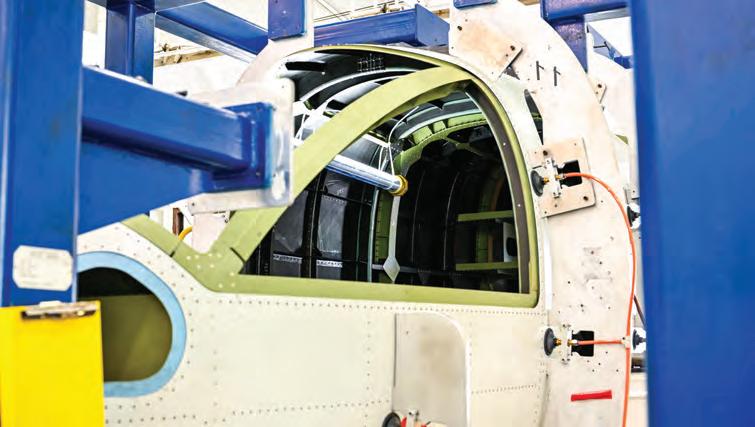


The 15-foot-high, 20-foot-wide elevated ramp’s design has a specific purpose: to allow testing high enough to eliminate the influence of ground effect, which amplifies lift when a wing is near the ground. Data from the aircraft and load cells built into the ramp will be sent to a mission control station on the NIAR grounds. “We’ll be able to watch all of this testing occur from very nearby,” she said.
Housed in a moveable trailer, the ground control station will also be used for remote piloting during flight testing. The trailer has two levels, one with equipment and workstations, then a stairway leads up to a piloting platform with large windows where test pilots can view the action. Being mobile, the trailer will travel with Nexus when remote operations are underway.
Bell, Textron Aviation, and Textron Systems contributed to the telemetry and triple-redundant radio datalink equipment, as well as live video feed. Each datalink operates on different frequency bands, Meyer explained, “so that we have highintegrity communications with the vehicle. It also has redundant inputs for AC power, as well as backup battery power for the AC power and the low voltage that powers avionics equipment.”
Once sent to the trailer, data is fed to workstations in the trailer and elsewhere to engineers monitoring the flight-test activity. “This is like an order of magnitude more complicated than earlier [telemetry systems],” she said.
While Shortt couldn’t offer a timeline for the first untethered flight of the Nexus, she did say that the first contained tethered flight is scheduled for the second half of 2025. “Once we have satisfied ourselves there, [then] we’ll move to the remotely piloted flight, which is the step process. Stay tuned.”
Unlike Textron eAviation’s Pipistrel Velis Electro, which is a conventional airplane powered by a battery-driven electric motor, the Nexus will have fly-by-wire flight

The control law is pretty mature. In hover, we can do the conversion and go to forward flight...but we intend to make it a lot easier to fly as we keep working on it. A lot of that manual flying that you normally have to do...is handled by the control laws so the pilot can focus on [what's necessary.]
— JD Terry Textron eAviation director of engineering
controls and envelope protection features that will keep pilots out of trouble. This is similar to the unified flight control concept that other advanced air mobility designers have adopted.
In the Nexus simulator, there are two hand controls and no pedals (what looks like pedals are just a resting place for the pilot’s feet). I gave the simulator a try during our pre-NBAA-BACE visit.
The right stick or inceptor moves the aircraft in three axes. From a hover position, pushing forward or aft, right or left, moves the Nexus in the direction of inceptor movement, while maintaining the hover
altitude and level attitude. Twisting the inceptor induces yaw left or right.
“This is the hover mode,” said Terry, “and our control laws and our software are pretty mature in the hover mode. It flies pretty much like you’d expect, like a highly augmented drone.” Once you’ve flown to where you want Nexus to be, just remove your hands from the inceptors, he explained, “and it’s going to go and latch onto your position and altitude. The idea is it’s really easy to fly as a pilot, so if there’s wind or disturbances, the control laws will handle that. You just tell it where to go, and the control laws handle the rest.”
To change altitude, I just move the left inceptor forward to climb or aft to descend (straight up or down). “If you leave the stick in the detent or don’t touch it, it’ll hold your altitude as you make all your other changes,” Terry said.
When I pointed out that it seemed unintuitive to have the vehicle climb with a forward push of the left inceptor, he explained that a video game grip is used on the left side. This will be replaced by a thrustlever-style grip, which will respond to a push by increasing thrust. But this all has to be integrated with what’s going on with the propulsion units, with the two forward and two wingtip propulsion units able to convert from vertical to forward lift.
“The control law is pretty mature,” Terry said. “In hover, we can do the conversion and go to forward flight…but we intend to make it a lot easier to fly as we keep working on it.”
To enter the conversion mode in the current setup, I pushed full forward on the right inceptor and the Nexus maxed out at 20 knots. After moving a small switch on the inceptor to engage the conversion,
I could then let go of the inceptor. A display showed the position of the forward and wingtip nacelles as they shifted from vertical to horizontal, while I managed pitch guidance on the primary display that guided me “through the conversion corridor,” as he explained it.
Now Nexus was flying in a more traditional airplane mode, and pulling aft or pushing forward on the right inceptor induced pitch changes while left and right moves induced bank. Turn coordination is automatic so there was no need to twist to induce yaw, and Nexus automatically compensates for lift changes during the turn so I didn’t have to pull the inceptor aft while in a turn as I would in a normal airplane.
“Eventually, we intend to add additional loops on top of this,” he said, “so it’ll be extra augmentation. The idea is it’s going to be really easy. A lot of that manual flying that you normally have to do as a pilot is handled by the control laws, and so the pilot can focus on [what’s necessary].”
To convert back to hover mode, I pulled the thrust offset back to 20% power then

toggled the inceptor switch and let go of the controls, and the simulated Nexus settled back into a hover. “That’s been the focus of the control law development—for hover—since our first testing is going to be on the hover,” Terry said.
There is much more to Textron eAviation than the Nexus eVTOL. Pipistrel, for example, has more than 2,500 airplanes in service, including light sport and ASTM-qualified training airplanes such as the Velis Electro, which is now FAA-approved for sale in the U.S., and the high-performance pistonpowered Panthera.
A retractable landing gear single-engine airplane, the speedy Panthera should achieve EASA CS-23 certification in the second half of 2025, and plans call for simultaneous FAA validation. “It’ll go 15% further, 10 knots faster, and burn 30% less fuel than its closest competitors,” said Shortt.
Pipistrel’s engineers are also developing the hybrid Nuuva V300 uncrewed aircraft, which will take off and land vertically under electric power and then fly horizontally powered by a Rotax piston engine. Capable of carrying 700 pounds of cargo about 300 nm, the Nuuva features fly-bywire flight controls, but it will be operated by a ground-based pilot.Eventually, one operator will be able to manage multiple Nuuvas, and the goal is to achieve autonomous operations.
“We see this being an air vehicle that can be used both for disaster relief, where maybe you were unable to get people into a space because of infrastructure, but with its electric vertical takeoff and lift capability, you could deploy a Nuuva,” she said. “[You could] have it be unloaded by people who are on the ground and then return it back for additional provisioning. We see it being very capable for the armed forces and forward deployment of provisions as well as commercial opportunities.”
BY MARK HUBER

In September, a New York jury awarded $116 million to the mother of the front seat passenger who died after a doors-off helitour flight autorotated into Manhattan’s East River in 2018. Trevor Cadigan, 26, and four other passengers died after his supplemental harness became entangled with the floor-mounted fuel shut-off control lever (FSOL) on the single-engine 2013 Airbus AS350B2 being operated by Liberty Helicopters on behalf of “shoe selfie” photo aerial tour firm FlyNYON. The entanglement caused the engine to stop running. While the pilot was able to successfully autorotate into the river, the Dart Aerospace skid-mounted pop-out emergency floats failed to fully inflate and the helicopter rolled inverted. The pilot, who was not wearing the supplemental harness, extricated himself; however, the passengers were unable to do
so and drowned. At 2019 hearings, thenNTSB Chairman Robert Sumwalt said the use of the construction-grade harnesses turned the flight into a “death trap” and the accident was otherwise survivable.
In making the award, the jury assigned liability at 42% to FlyNYON, 38% to Liberty, and 20% to Dart. Airbus Helicopters was not found at fault. The accident, and the litigation it triggered, drew fresh attention to the raging popularity of doors-off helitours and the attendant safety questions they raise.
Following the accident, Airbus began offering customers a new design FSOL. In a related Safety Information Notice (3570S-76), the company noted, “Despite the absence of any airworthiness requirement to protect the FSOL from accidental activation due to external influences from passengers and because the safety of crew and
passengers is always our highest priority, Airbus Helicopters has developed a design modification (MOD 075101) to the FSOL.
As a product safety enhancement, it will allow to minimize the risk of accidental activation while still allowing the FSOL to be easily activated by pilots in case of an emergency. So, Airbus Helicopters strongly recommends that customers take advantage of this important product safety enhancement by applying the SB N° AS350-76.00.24 replacing the current FSOL by the new one (MOD 075101) on AS350 B2 & B3 versions” as well as other models of the AS350/EC130 legacy fleet having a floor-mounted FSOL.
The retrofit modification consists of changes to the metallic top plate for the FSOL, by adding a lower detent as an additional means to keep the lever in the stowed position. EASA issued an attendant Safety
Information Bulletin on the modification (SIB No. 2021-05R1) on April 8, 2022. While EASA recommended the modification, it noted, “At this time, the safety concern described in this SIB is not considered to be an unsafe condition that would warrant Airworthiness Directive (AD) action.”
Another contributory factor was the failure of the Dart Aerospace emergency pop-out floats to symmetrically inflate following pilot activation. This caused the aircraft to roll over seconds after impact, even though the pilot had made a successful autorotation.
The typical tri-bag float system requires semi-annual, annual, and three-year inspections, with full inflation during the last. However, even if the floats were functioning properly, that was no guarantee that the helicopter was going to stay upright, according to a 1996 FAA study titled, “Survey and Analysis of Rotorcraft Flotation Systems.” The study concluded, “Rotorcraft, in both ditching and water impact scenarios, were found to overturn immediately upon impact.”
During its December 2019 public hearing on the accident, the NTSB criticized the FAA’s STC approval of the floats for the AS350, specifically with regard to the position of the float activation lever on the cyclic, the inordinate amount of pull force required to activate that lever (greater than 59 pounds), and the failure of the year 2000 crossfeed tube modification to prevent asymmetrical float inflation in the event that one of the gas cylinders failed.
Specifically, the NTSB recommended that the FAA “Revise miscellaneous guidance 10 in Advisory Circular (AC) 27 and AC 29 to include design objectives for emergency flotation systems that consider human factors design objectives, such as activation handle pull-force characteristics; provisions for clear, unambiguous, and positive feedback to pilots to indicate that the float system was successfully deployed; and inspections to ensure that an installation of a manual activation system does not preclude a pilot’s ability to deploy the floats, as designed, after it has been fielded.”
Dart suggested that the pilot had used improper technique to activate the floats by not fully pulling the inflation lever, which led to the asymmetry.
Counsel for FlyNYON suggested that Dart knew of the possibility of asymmetry and acknowledged as much when it issued a post- accident Service Bulletin SB-20183, which advised that the cyclic mounted float activation handle needed to be pulled fully aft “until there is no travel left available” to “prevent asymmetric inflation.”
Subsequently, Dart issued SB-2018-07, which mandated customers with floats installed on Airbus AS350/355 models to perform cable rigging, inflation, and handle force checks. Dart noted that the floats “utilize a system of pull cables to activate and release compressed gas from the float cylinders into the floats. Proper installation of the pull cables allows the two float cylinders installed on the aircraft to activate simultaneously, allowing for proper distribution of gas to all floats in the system. Improperly installed pull cables may lead to asymmetric inflation of the float system and/or difficulty deploying the float system from the float activation handle installed on the pilot cyclic.”
Capsizing aside, the FlyNYON crash was likely survivable to all aboard had they been able to release from their supplemental harnesses. On August 22, the FAA issued rule 89 FR 678 34 that prohibits the use of aircraft supplemental restraint systems unless it can be demonstrated that the wearer can rapidly extricate from them.
The rule followed a July 8, 2019, FAA emergency order (8900.4) of prohibition pertaining to doors-off flight operations for compensation or hire and an emergency order issued shortly after the accident. It prohibited the use of supplemental passenger restraint systems (SPRS) that cannot be released quickly in an emergency. The emergency order required the “correct use of FAA-approved SPRS.”

There were many actors in the FlyNYON tragedy, but the NTSB’s most scathing criticism was reserved for Liberty Helicopters and FlyNYON, which were broadly faulted for their respective safety cultures characterized as “deficient.” Shortcomings mentioned by the NTSB included: a lack of a safety management system at both organizations; a “misleading” NYON passenger safety video that characterized the supplemental harnesses as quick-release and equipped with an easily used cutting tool; purging pilots from safety meetings; and disregarding pilot safety concerns.
Today, FlyNYON continues to market doors-off and doors-on flights, which it calls “photo flights,” and traditional doors-on flights, which it calls “helicopter tours.”
Customers must sit through a safety video, sign a liability waiver, and be fitted with a quick-release SPRS harness before boarding the helicopter. Its harness system now consists of the 338-ARS Heli-Ops harness and ARS personal retention lanyard. The system features a quick-release tether. Once aboard, staff rechecks the harness. Arms, feet, and legs must remain in the helicopter during takeoff and landing.
The families of several other victims of the 2018 accident settled privately with the defendants. The popularity of doors-off helitours has soared since the accident in several markets, particularly in Hawaii.
Attempts to reach FlyNYON for comment were unsuccessful. z

Fargo Jet Center (FJC), the full-service FBO provider at North Dakota’s Hector International Airport (KFAR), celebrated a major expansion in September with the opening of a $25 million, 112,000-sq-ft hangar and office complex. The expansion brings the company’s footprint at KFAR to 328,000 sq ft of facilities spread over 11 acres and highlights its position as a key player in the local aviation industry and economy.
The new facility includes a 27,000-sq-ft maintenance hangar and a 23,000-sq-ft hangar for modifications with dedicated space for composite fabrication, paint, sheet metal work, and avionics. The added hangars—among the largest in the region—have 30-foot-high doors. The facility—which will also serve as home to FJC sister company Weather Modification International—will enable the FBO to repurpose 32,000 sq ft of hangar space for increased based and transient aircraft storage.
The Barkley Regional Airport Authority (BRAA) in Paducah, Kentucky, is evaluating proposals to operate the lone FBO at Barkley Regional Airport (KPAH). It issued an RFP because the lease for incumbent Midwest Aviation is due to expire. According to executive director Dennis Rouleau, the airport authority wished to evaluate market interest in the location before it awards its next long-term lease for the facility.
The BRAA is in the process of a multi-million-dollar renovation of the facility that includes updating both the exterior and interior of the FBO offices, as well as adding additional customer amenities such as a conference room, pilot quiet room, and shower. It expects the project to be completed by year-end. Midwest Aviation, which has operated the FBO for nearly 40 years, informed AIN that it was among those submitting proposals.
ICCS, one of Mexico’s largest private aviation services providers, is proceeding with a major expansion of its Toluca International Airport FBO. The company purchased an existing facility on the field that it has completely gutted and will rebuild.
ICCS’ nearby facility includes a 4,200-sq-ft terminal and nearly 60,000 sq ft of hangars. Meant to enhance rather than replace its existing facility, the addition will include a 17,000sq-ft, two-story terminal with VIP lounges, conference rooms, a bar, kitchen, crew lounge, onsite customs and immigration clearance, kids’ entertainment zone, and pet-friendly spaces. It will also be home to the country’s largest business aviation catering operation, providing gourmet meals from leading chefs.
Additionally, the company will add a 27,000-sq-ft hangar, bringing the location to nearly 100,000 sq ft of hangar space and 2 acres of ramp when it is completed by next November.
W Aviation, an FBO at Florida’s Fort Lauderdale Executive Airport (KFXE), has opened its new terminal. The company acquired a vacant 20,000-sq-ft building in 2020 and began a $4.5 million total reconstruction project.
The two-story terminal features several private lounges, a refreshment bar, conference room, pilot lounge, fitness center, entertainment arcade, duty-free shop, and three overnight suites—each with its own bathroom.
W has had a presence at KFXE since 2015, and in 2020 it added a pair of 20,000-sq-ft hangars to its complex. It is in negotiations with the city to build two new 18,000-sqft hangars that will increase its aircraft storage capacity to 100,000 sq ft. Over the past decade, the company— which also operates FBOs in Venezuela and Aruba—has invested more than $24 million in its KFXE facility.

Some FBOs have earned a reputation for certain attributes over the years, and for Signature Aviation’s location at St. Paul Downtown Airport/Holman Field (KSTP), that something is outstanding customer service. For years, the facility has scored at or near the top of the CSR category in AIN’s annual FBO survey.
Sandy Tachovsky—the facility’s duty manager and a 33-year veteran at the location— said the secret lies in “Minnesota nice,” a term that describes the friendly and courteous behavior for which the state’s residents are generally known. That is combined with the FBO’s consistency of service to its large based-tenant population and familiar transient customers. “It’s really getting to know all of them and going that extra mile for them,” Tachovsky told AIN.
In some cases, the staff takes that latter bit quite literally, such as driving all the way to Wisconsin on a beer run. The sta wanted to stock an aircraft departing the facility after a Sunday hometown Vikings game, but Minnesota then banned Sunday alcohol sales. The FBO is located within 20 minutes of the venues for all four of the city’s professional sports teams.
Clint Kummer, Signature’s regional v-p for the central region, also got his start at the facility 35 years ago as a third-shift line technician. While he is now responsible for 40 of the company’s locations from Canada through Texas, he still resides in the area and maintains an office in the company’s KSTP terminal, which was built in 1988 by what was known at the time as Regent Aviation.
“To me, it just feels like a long-term culture,” Kummer told AIN during a recent visit to the facility. “We’ve always had a good group of people here. The new people that come in, they either fit into that culture or they get weeded out.”

Signature acquired the FBO in 2007 and has continually updated it, with a major overhaul due to start in the second quarter of next year. It sits on the southwest side of the field, opposite the Mississippi River, which has overflowed its banks several times over the past two decades, flooding the airport but never quite reaching the Signature complex.
The sprawling, single-story 10,000-sq-ft terminal—which is open and sta ed 24/7— features a cozy passenger lobby with a large fireplace, a pair of 10-seat conference rooms, a customer event space, flight planning area, pilot lounge, refreshment area, three private business centers, catering kitchen (the FBO favors Atikis Minnesota Aviation Catering), crew cars, onsite car rental, and complimentary shuttle service.
The FBO is a gateway facility under the TSA’s DCA Access Standard Security Program for flights into Reagan National Airport in Washington, D.C., and U.S. Customs and Border Protection clearance is available 24/7 with advance notice from a facility on the opposite side of the field in the former airport terminal, which now also houses an upscale restaurant with runway views.
Signature occupies 27 acres at KSTP, 17 of which are milled and repaved ramp space just completed as part of a $1.6 million project. With the severe Minnesota winters, it offers more than 150,000 sq ft of hangar space. While its hangar occupancy is normally around 85%, that is pushed to more than 100% during the winter. It is home to 25 turbine-powered aircraft and also houses aircraft from the Minnesota State Patrol, which flies continually and is viewed as “family” by the FBO sta
In addition, Signature provides ground handling for an additional five private hangars on its property. The service provider has available space to accommodate the construction of another two 30,000-sq-ft hangars if and when the need arises.
One of two FBOs on the field, Signature claims the majority share of the business, with its underground fuel farm holding 46,500 gallons of jet fuel and 12,000 gallons of avgas. The facility has a sta of 28, trained using Signature’s in-house program.
The complex is home to a Signature TechnicAir service facility, which o ers AOG support, avionics, and MRO services. C.E.
BY AIN STAFF

Kansas-based MRO and FBO operator Yingling Aviation has acquired fellow maintenance provider Bevan Aviation, a 70-year-old company specializing in avionics repair and installation.
A neighbor of Yingling’s at Wichita Dwight D. Eisenhower National Airport (KICT), Bevan Aviation’s capabilities include aircraft avionics inspection and maintenance, with its experience covering not only the latest avionics equipment but also legacy products.
Yingling CEO Bob Rasberry said the Bevan purchase will “deliver additional capacity and technical capabilities enabling us to continue meeting the rising demand for maintenance and refurbishment of aircraft.”
Broomfield, Colorado-based Blackhawk Performance Center (BPC) has received FAA Part 145 repair station certification. This approval allows the Blackhawk Group facility to provide comprehensive maintenance services for Beechcraft King Airs, as well as avionics sales, installation, and support for King Airs and Cessna Citations. Besides offering full-service MRO capabilities for King Airs, the Broomfield shop can install Blackhawk’s XP Engine+ upgrades on the turboprop twins, as well as perform Pratt & Whitney Canada PT6 overhauls, repairs, and hot sections. On the avionics side, it is an authorized dealer for Garmin, Collins, Gogo, and AirText.
The Blackhawk Group has another BPC in Columbia, Missouri, that also specializes in lightturbine aircraft maintenance. Sister company Avex has MRO facilities specializing in Daher TBM turboprops in Broomfield and in Camarillo, California.
Duncan Aviation is kicking off construction next month on a $25 million paint facility at its Lincoln, Nebraska location. Plans call for a 32,500-sq-ft dual-bay hangar with an additional 9,000-sq-ft storage and support area that will connect to the MRO provider’s existing paint facility built in 2012. The project also entails expansion of the ramp on the building’s west side.
Designed and engineered by long-time Duncan Aviation partner Tectonic Management Group, the facility will feature cross-draft bays with updated climate control, as well as upgraded wastewater treatment and added air showers to contain more contaminants. It will further have a small application booth for parts such as flaps and thrust reversers.
Construction is anticipated to be complete by January 2026.
The new facility will accommodate large models such as the Gulfstream G650, Dassault Falcon 10X, and Bombardier Global 7500, as well as provide flexibility for unscheduled and drop-in work.
Stevens Aerospace and Defense Systems’ new Denver, Colorado MRO location has become so busy that the company shifted to a seven-days-a-week work schedule in October.
The South Carolina-based maintenance provider announced this past March that it has taking over operations at Centennial Airport (KAPA) from Mayo Aviation and soon realized that the demand for its services outstripped its current capacity, leading it to add more technicians and expand operations through the weekend to reduce downtime.
Driving the increase, the company noted, were critical medical and governmental flight operations, as well as charter and corporate operators in the Rocky Mountain region in need of quality MRO services.

Business aircraft operators now have a new maintenance, repair, and overhaul (MRO) resource in the shape of ExecuJet Haite’s base at Daxing International Airport. The 77,000sq-ft facility is situated alongside the new purpose-built FBO run by Capital Airport Holding Business Aviation Management (CBM) and has opened at a time when tra c is growing.
As part of a dedicated 400,000-sq-m business aviation complex at Daxing, the new facilities are intended to provide aircraft operators with an alternative to Beijing’s main gateway Capital Airport, where CBM already provides full handling. The new ExecuJet Haite base expands the scope of the MRO service it has provided since 2010 at China’s Tianjin Binhai International Airport.
According to Paul Desgrosseilliers, general manager of ExecuJet Haite General Aviation Services, China’s business aviation industry is now showing signs of recovery after its Covid-driven downturn. After several years when the domestic fleet shrunk, he told AIN that some new Western-made aircraft are starting to be delivered and international operators are now finding it easier to fly into and within the country.
ExecuJet Haite, a Chinese company that until 2016 was part of a joint venture with Europe-based business aviation group ExecuJet, intends to support 16 different aircraft. Initially, these types will include Embraer’s Phenom, Legacy, and Lineage jets; Gulfstream’s GIV, GV, and G600 models; Bombardier's Learjet, Challenger, and Global; and all current production Falcon models.
“We see this [the Beijing area] as a key market for us, and Daxing makes sense due to its proximity to Tianjin, which is only a 90-minute drive away,” Desgrosseilliers explained. ExecuJet Haite intends to pool some of its skilled sta and specialized tools

between the two facilities, viewing the Daxing facility as a long-term investment.
While Daxing is further from the center of Beijing than Capital Airport—34 miles compared with 21 miles—door-to-door travel times could be comparable. It is likely to be quicker for passengers and crew to pass through the less crowded airport, and the highway from the south side of the city into downtown is much less congested than the road from Capital Airport.
Desgrosseilliers predicted that a combination of more available space and lower handling costs would likely induce business aircraft operators to migrate to Daxing. He said the airport is set to emerge as a significant market for transient tra c, including aircraft from Southeast Asia, and that based operators may also start positioning there.
CBM was established in 2019 as a whollyowned subsidiary of Beijing’s Capital Airport Holdings, which is owned by the CAAC. It is tasked with responsibility for FBOs at both airports. The Capital Aviation FBO had been built more than a decade earlier.
According to Desgrosseilliers, the new business aviation enclave at Daxing has
ramp space for at least 85 business jets and 40 more in five hangars for covered parking. Unlike MRO companies in other parts of the world, ExecuJet Haite appears to have avoided the shortage of skilled labor. He explained that many of his technicians have been with the company for more than a decade, and he has found a ready supply of young trainees from local technical schools.
According to Desgrosseilliers, an American who has worked in China’s business aviation sector since 2010, the country has become far more user-friendly for companies and aircraft operators. “Being able to open a new MRO in just nine months, as we have done, would have been impossible 15 years ago,” he said, adding that the safety audit process for operations is very rigorous.
In his experience, it has also become a lot easier to import aircraft parts into China on a tax-free basis, with the process now taking just three or four hours, compared with a week or more some years ago. He also reported that the process for securing flight approvals for business aircraft movements has become far more straightforward. C.A.
BY DAVID JACK KENNY
Hawker 900XP, July 20, 2024, Telluride, Colorado
The twin jet that was damaged when it ran off the end of Runway 27 at Colorado’s Telluride Regional Airport (KTEX) during an aborted takeoff apparently was not configured for departure as the pilot had calculated, according to the NTSB preliminary report of the July 20 accident. The report also noted that weather data indicated the aircraft might have attempted to take off with a tailwind.
The two pilots were not injured in the accident, but the lower fuselage was substantially damaged when the aircraft traveled over the engineered material arresting system (EMAS) and came to a stop about 150 feet from the runway threshold. They were on a repositioning flight without passengers to Miami Executive Airport (KTMB) after completing an on-demand passenger flight earlier in the day, landing on KTEX’s Runway 9.
For takeoff, the crew selected 7,111-foot Runway 27, as recommended by a Telluride operations notice. “Performance calculations showed a takeoff roll between 6,800 to 6,900 feet would be needed with flaps set to 15 degrees,” according to the NTSB report. “There were 1,253 gallons of fuel onboard.”
When the airplane had not attained 75% of the planned takeoff speed halfway down the dry runway, the pilot decided to abort. “The brakes, air brakes, and thrust reversers were used, however the airplane did not slow down,” the NTSB said. “Maximum braking was then applied, and the airplane began to depart
the runway to the right” before rolling on to th e EMAS.
After the crew exited the airplane, the pilot saw the wing flaps fully retracted. A review of video from an Automated Weather Observing System camera (located just to the north of the sole runway) showed an “extended windsock with an easterly wind.”
The airport, which is located on a 1,000foot mesa with rising terrain on all quadrants, had the following restrictions in place at the time of the accident: “RY 09/27 RCMD TKOF RY 27; LAND RY 09 AND AVOID POPULATED AREAS. RY 09/27 GRADE–.08 ON RY ENDS, -1.3 TO APPROX MIDPOINT THEN +.75.”
‘Unusual’
Cessna 550 Citation II, Aug. 20, 2024, Odessa, Texas
A pilot-rated witness reported that the corporate jet’s engines sounded “unusual” during the takeoff run immediately preceding the fatal accident and that it flew down the last third of 5,003-foot Runway 16 at an altitude of about 10 feet in a nearlevel attitude.
The pilot and only passenger were killed and one person on the ground was seriously injured when the Citation struck power lines and a single-story restaurant, leaving its right main gear in the building’s roof. The airplane struck two garages and came to rest about 150 yards further south, igniting a fire that consumed most of the wreckage.
Skies were reported clear with 10 miles visibility. Winds were from 190 degrees at 7 knots. The parking brake valve was found in the disengaged position, and a cockpit voice recorder was located and sent to the NTSB recorders lab.
Cirrus SF50, Sept. 9, 2022, Saint Cloud, Florida
The pilot’s decision to continue an instrument approach into the Kissimmee, Florida Gateway Airport (ISM) despite two ATC advisories of “heavy to extreme” precipitation along the final approach course resulted in the single-engine jet’s penetrating an active thunderstorm cell, causing a series of violent altitude excursions. The pilot and one passenger escaped with minor injuries and the second passenger was uninjured after the pilot deployed the Cirrus Airframe Parachute System (CAPS).
The Part 91 personal flight departed the Miami-Opa locka Executive Airport at 14:12 local time. En route the pilot obtained ISM’s ATIS broadcast, which reported light rain and ceilings between 3,800 and 4,600 feet. At 14:48:34, the controller advised of heavy to extreme precipitation over the final approach course to Runway 33 and asked whether he wished to continue or divert. He chose to continue and requested the RNAV approach to Runway 33. He later reported having been in visual conditions.
Flying the final approach course at 2,000 feet, the airplane pitched up to 13 degrees and slowed to 100 knots. An aural warning advised the pilot to “put more power.” He disconnected the autopilot and applied full takeoff thrust; the airplane pitched up and climbed at nearly 5,000 feet per minute, “well beyond [its] performance capability,” in the storm’s updrafts.
The Electronic Stability and Protection system engaged with the jet in a 28-degree
nose-up attitude; the pilot added nosedown input only to have it pitch up and climb again. He deployed the CAPS at 3,150 feet with the airplane in a 45-degree left bank; the Cirrus descended into a marsh and rolled over.
The 57-year-old private pilot reported 982 hours of flight experience including 325 in the SF50, 192 as pilot-in-command. Further details were not reported by the NTSB.
Airbus AS350 B3, Nov. 9, 2022, Kitsault, British Columbia, Canada
An incapacitating medical event of undetermined nature resulted in the solo pilot crashing into trees while attempting to return to base from a geophysical survey flight over mountains. After completing the last of six low-level survey passes, the pilot contacted the equipment operator by VHF radio to report that he “was unwell and shivering uncontrollably.”
He had experienced similar symptoms two evenings earlier, about 38 hours before the accident flight, but had improved after resting during the intervening day and dispatched himself as fit to fly.
The survey work involved low-speed, low-altitude flights using a 680-pound, 58-foot-diameter transmitter-receiver antenna array suspended 140 feet below the helicopter on a cargo hook. The equipment can only be used in favorable weather: light and stable winds, good visibility, and high ceilings.
The 18,825-hour solo pilot had logged nearly 13,000 hours in type that included “extensive flight experience…in mountainous terrain and with the survey loops attached.”
Tracking data from the helicopter’s Guardian Mobility Flightcell DZMx satellite/cellular unit showed that 16 minutes before the crash, the pilot had activated
its EMER mode, which shortened reporting intervals from two minutes to one, sent text and email alerts to base, and added a “Distress” tag to the aircraft’s registration on the tracking site. None of those were noticed by company personnel.
The flight track began meandering eight minutes before the crash, diverging 60 degrees from the inbound course. The equipment operator drove to the staging area to meet the helicopter, arriving at 11:01, and could hear it until the noise ended abruptly at 11:11. One minute later an ELT signal reached the Joint Rescue Coordination Centre in Victoria, B.C. Searchers located the wreckage less than four hours later just two miles from the staging area, finding the helicopter destroyed and the pilot deceased.
Beechcraft King Air C90A, Dec. 15, 2022, Kaupo, Hawaii
Thirteen minutes after departure on an interisland positioning flight in dark night conditions, the King Air’s vertical gyro failed in cruise flight at 13,000 feet, in turn causing failure of the pilot’s Electric Attitude Director Indicator (EADI) and autopilot disconnection. The pilot did not declare an emergency or even report the instrument failure to ATC, but attempted to continue hand-flying the airplane by reference to the copilot’s attitude indicator. During the next five minutes, as ATC “issued varying instructions,” the airplane alternately rolled right and left and entered a 1,000-fpm that increased to 3,500 fpm.
Seven minutes after the failure, with the airplane banked 65 degrees, ATC asked the pilot to verify his heading. The bank increased to 90 degrees and airspeed built to 260 knots while he attempted to reply.
The cockpit’s Appareo video recording system captured “a loud metallic bang…consistent with an in-flight separation of the empennage from the fuselage.” A witness flying a Piper PA-44 from Hilo to Honolulu reported seeing the King Air well above him to the north, descending from 13,000 to 8,000 feet before entering a steepening spiral descent until it struck the water. The pilot and both medical crew members were killed.
The 47-year-old airline transport pilot held privileges for both multiengine airplanes and helicopters with three jet type ratings. His certification records also included six Notices of Disapproval prior to his hiring due to “multiple unsatisfactory training events,” three each in airplanes and helicopters. During his initial training by the operator, he received unsatisfactory ratings in five of six training sessions. In three years of employment, he had failed three of his six six-month proficiency checks. After the accident, the company’s director of operations reviewed his file and acknowledged that it wasn’t “what [he] would consider a normal training record.” z

BY GORDON GILBERT
Nov. 21, 2024
NavCanada released for consultation a proposal to revise customer service charges, e ective Jan. 1 2025. The proposal calls for increased service charges averaging 3.73% across all categories. The overall average net increase in service charges includes an average basic rate increase of 4.99% and an average temporary rate decrease of 26.73% compared with existing rates to recover the company’s rate stabilization account (RSA). On Jan. 1, 2024, NavCanada implemented a temporary rate increase averaging 3.76% to recover an RSA shortfall. “Since that rate change was implemented, our medium-term air tra "c forecast was adjusted downwards,” NavCanada said. “With this proposed service charge revision, the RSA shortfall balance is projected to decline to $155.7 million by the end of fiscal 2025."
Dec. 1, 2024
On or about Dec. 1, 2024, the FAA is scheduled to transition its notam format to align with international standards. The agency said the transition to the new format will ensure U.S. notams are compliant with standards set by the International Civil Aviation Organization. According to the FAA, the new format will improve accuracy and accessibility of notam data for pilots, dispatchers, and other notam consumers, provide notam consumers with one consistent format for domestic and international operations, and allow for enhanced search, sorting, filtering, and archiving capabilities of notam data. An advisory circular will be published when the new format becomes effective.
Dec. 2, 2024
Starting on Dec. 2, 2022 EASA Part 145 maintenance organizations were required to meet revised regulations that were published in November 2021. However, there is a two-year transition period, to Dec. 2, 2024, to allow maintenance organizations to correct any findings of
non-compliance with the new Part 145 requirements. The main change introduced in the regulation is the required implementation of a safety management system. This requires maintenance organizations to implement hazard identification, risk management, safety assurance processes, and the designation of a safety manager. To support the safety management system processes, several organization requirements have been changed including the safety policy, internal occurrence reporting, competence of staff, and compliance monitoring (replacing quality assurance).
Dec. 4, 2024
This notice of proposed amendment (NPA) from EASA establishes initial and continuing airworthiness provisions for certifying unmanned aircraft systems (UAS). The proposals include new and amended acceptable means of compliance and guidance materials. The NPA also addresses new operational and mobility concepts based on innovative technologies and aims to promote UAS acceptance by European citizens. Comments on these proposals are due by Dec. 4, 2024.
Jan. 1, 2025
EASA postponed a requirement for certain large airplanes to be equipped with an emergency locator transmitter with distress tracking capability: ELT(DT). An ELT(DT) is designed to activate automatically in flight when it detects conditions indicative of a distress situation, or the flight crew can manually activate it. Under the rules, aircraft with a mtow of more than 27,000 kilograms (above 59,500 pounds) and first issued a CofA on or after Jan. 1, 2024 will be required by Jan. 1, 2025 to be equipped with an ELT(DT) that autonomously transmits information from which the aircraft's position can be determined by the operator at least once every minute when in distress.
Jan. 1, 2025
Starting in 2025, Denmark will enact its long-time proposed per-passenger air travel tax with rates gradually escalating through 2030. The tax applies to all aircraft—commercial and private—with more than 10 seats and an mtow of 12,566 pounds or more. They will be levied on a sliding-rate scale based on flight length:
intra-Europe, medium-haul, and long-haul. Rates initially will range from $4.48 to $44.82 per passenger but are scheduled to increase from $7.35 to $60.30 by 2030. The government said proceeds from the tax will be used to fund the transition to sustainable aviation fuel in Denmark and for cash assistance to the elderly.
25,
Certain air carrier airports certified under FAR Part 139 must submit an implementation plan for a safety management system on the following deadlines: April 24, 2024, for airports designated as hubs; Oct. 24, 2024, for airports with 100,000 or more annual operations over the previous three years; and April 25, 2025, for airports classified as port of entry, landing rights, user fee, and international facilities.
ETIAS (European Travel Information and Authorization System) is an online pre-travel and pre-boarding requirement applying to visa-exempt third-country nationals planning to travel to European states. The implementation date for ETIAS has been extended several times, with the latest now May 1, 2025. The information is submitted via an online application ahead of arrival at borders enabling pre-travel assessment for irregular migration risks, security, or public health risk checks. ETIAS is one of two new European travel authorization programs. The other program is EES (Entry/Exit System), compliance for which was scheduled to start in October 2024. International flight planning organizations, such as Ops Group and Universal Weather and Aviation, have been seeking clarification if ETIAS and EES apply to private operators or just commercial flights.
For the most current compliance status, see: ainonline.com/compliance

At Duncan Aviation, we understand that buying or selling a jet is a profoundly personal journey. As your vital advisors, we o er operational expertise and timely insights that go beyond the surface and support you throughout your ownership experiences. Our team’s dedication and vast network of industry connections ensure that every decision you make is thoroughly informed, aligning perfectly with your unique mission and aspirations.

BY JESSICA REED
Gulfstream appointed new international division vice presidents for sales. Business aviation veterans Benoit Defforge and David Taylor will have responsibility, respectively, for the Europe/Middle East/Africa and Asia-Pacific regions. Dubai-based Defforge was formerly CEO and president of Airbus Corporate Jets and more recently was CEO of Stanton & Partners Aviation. Taylor joined Gulfstream from business aircraft broker Burrows Aerospace, where he was sales director for the Asia-Pacific region. Gulfstream has also appointed Jack McGowan as its new regional v-p of sales for Northern Europe. He was formerly the executive sales director for Flexjet and will be based in London. Gavin Thompson was promoted to senior regional sales manager for worldwide sales, leading its global network of regional sales managers. Scott Butcher has joined Gulfstream as a regional sales manager for Europe, having previously worked for charter flight provider Starflight Aviation. Jessica Gagen has been recruited as a sales engineer to support the team in Europe, the Middle East, and Africa.

The Aircraft Owners and Pilots Association (AOPA) named Darren Pleasance as its new president and CEO, effective Jan. 1, 2025. Pleasance, an experienced pilot with more than 8,000 hours total time in more than 50 aircraft types, brings a background in both aviation and business leadership to the role. His appointment follows the retirement of Mark Baker, who served as AOPA’s president for more than 11 years.
The European Business Aviation Association promoted Róman Kok to director of public affairs and communications. Kok brings a background in European policy as well as previous experience at the Dutch Embassy in Warsaw and an American lobbying firm in Brussels.
Rolland Vincent Associates named business aviation expert Dean Roberts as v-p of strategy, sustainability, and development. Roberts formerly worked at Rolls-Royce for more than four decades, with expertise in strategy, industry
analysis, market forecasting, and analytics.
Ahmad Al-Shiply was promoted to CFO of Million Air Dallas. Al-Shiply previously was director of accounting and finance at the company.
Garett Jerde was appointed as CEO of JetHQ and Rebecca Johnson was named COO. After working as a pilot and sales professional at Hawker Beechcraft, Jerde founded JetHQ in Dubai at age 28. Johnson joined the company more than seven years ago and has served as president of sales in Europe, as well as global sales president.

Eve Air Mobility hired Megha Bhatia as its chief commercial officer. Bhatia previously served as chief strategy officer at JSSI.
Asian Sky Group (ASG) hired Justin Yeung as business development and sales director. Yeung’s 15-plus years of experience in aviation includes serving as director of aircraft management and charter at Hong Kong-based Metrojet. ASG also hired Paul Tsang as sales director with a focus on both aircraft charters and sales. Tsang recently served as v-p of ACMI and business verticals for Chapman Freeborn and had also worked for both Hongkong Jet and Gama Aviation.
Integrated safety and quality management software provider ASQS promoted Florian Lis-Srajer to head of operations in Thailand. Lis-Srajer joined the company in 2020 and will continue serving as a project and account manager.
JSSI appointed Natalie Vander Kelen v-p of customer support for Traxxall. Vander Kelen’s recent experience includes managing operations and customer support at Veryon (formerly ATP/Flightdocs).

Joseph Behling was hired as the FBO general manager at Cutter Aviation’s Phoenix Sky Harbor location. Behling has more than two decades of experience in the aviation industry.
Maureen Gautier was hired by aviation sustainability group 4Air as the U.S.-based company’s program manager in Europe. With a background as a business aviation attorney, Gautier was
formerly the sustainability and future workforce manager for EBAA.

C&L Aviation Services hired Felipe Garcia as component shop manager for its new landing gear and wheel and brake capabilities. Garcia’s experience spans more than three decades, including more than 25 years of landing gear maintenance expertise.
West Star promoted Ray Sharp to director of maintenance at its East Alton, Illinois facility. Sharp previously worked as an airframe and powerplant technician at Cessna and was recently employed at StandardAero for 25 years.
AIN Media Group welcomed Amy Wilder to the editorial team as staff writer, covering a range of business aviation and other industry news for our digital and print publications as well as providing editing support. Bringing nearly a decade of editorial experience to her new role, Wilder joins AIN from Flying Media Group, where she most recently served as web and magazine managing editor of Plane & Pilot. In addition, she has worked with El Palacio magazine, the Santa Fe New Mexican, the Fayette Advertiser, and the Columbia Daily Tribune in Missouri. z

The National Aeronautic Association’s (NAA) Fall Awards event this year honors luminaries spanning the aerospace industry, including AIN Media Group co-founder and chair emeritus Wilson Leach with the Wesley L. McDonald Distinguished Statesman & Stateswoman of Aviation Award. Other recipients of the Distinguished Statesman award include safety expert Gregory Feith, champion aeromodeller Jim Richmond, and veteran communications and marketing executive Robert Stangarone, who recently became president and CEO of the Corporate Angel Network. These are the 2023 recipients, with 2024 still to come.
Other award recipients include David Allvin, chief of sta of the U.S. Air Force, with the Clarence H. Mackay Trophy; PenFed Credit Union president and CEO and PenFed Foundation CEO James Schenck, with the Bruce Whitman Trophy; Irene Trowell-Harris with the Katherine and Marjorie Stinson Trophy; and Arthur “Trip” Barber with the Fédération Aéronautique Internationale World Air Sports Federation (FAI) Frank Ehling Diploma.
In addition, NAA will present the Public Benefit Flying Awards. The recipients include Dennis Phelan with Distinguished Volunteer Pilot; David Brubaker with Distinguished Volunteer; and Jim Hesseman with Outstanding Achievement in Public Benefit Flying.
NBAA has given a Silk Scarf Award to John Hoover, an aviation tax attorney and former chair of the NBAA Tax Committee. This award recognizes Hoover’s significant contributions to the business aviation industry. Since joining Holland & Knight as a partner in 2018, Hoover has become a leading authority on structuring business aircraft transactions and navigating federal and state tax issues. His expertise has been invaluable in helping companies understand and comply with evolving tax regulations that a ect the aviation industry. Hoover has also been a key figure in addressing tax controversies on behalf
of his clients and the broader business aviation community.
Additionally, Hoover has played a crucial role in NBAA’s e orts to clarify complex tax policies and advocate for the industry. As an active member of the NBAA Tax Committee, he has provided input on several regulatory initiatives.
Garmin co-founders Min Kao and the late Gary Burrell were honored with enshrinement into the National Aviation Hall of Fame (NAHF) during its 60th annual ceremony held September 14 at the National Museum of the United States Air Force. This accolade recognizes their lasting contributions to the aviation industry, cementing their legacy alongside other aviation pioneers.
Also recognized this year were the late Don Bateman, chief engineer of flight safety avionics at Honeywell, and Peggy Chabrian, founder and long-time president of Women in Aviation International, among others. Marcela White, co-owner of Tavaero Jet Charter, was recognized at the International Conference for Women as a 2024 Breakthrough Woman. A licensed pilot and certified cabin attendant, White has more than 35 years of experience in the aviation industry.
Elie Zelouf is among the inductees who were recently recognized as European Living Legends of Aviation. Zelouf has worked at Jet Aviation since 1967 and received the European Business Aviation Award in 2010 for his contributions to the company and business aviation community.
Janine Iannarelli, founder and president of Par Avion, was recognized as a role model in the aviation industry at the 2024 Women in the Fast Lane of STEAM Luncheon and Style Show hosted by the Greater Houston Women’s Chamber of Commerce. Iannarelli’s experience in the aviation industry spans more than 35 years and she serves on the board of directors of FBO/MRO Heritage Aviation.
2024 Statement of Ownership, Management & Circulation as required by the U.S. Postal Service Aviation Internation News Magazine (ISSN 0887-9877)
Filing Date: September 23, 2024
Aviation Internation News is a monthly magazine, 12 issues per year. $99.99 per year when sold.
Complete Mailing Address of Known O ce of Publication: Aviation International News, 214 Franklin Ave, Midland Park, NJ 07432-1842. Contact Person: Eileen Silberfeld. Telephone: (201) 345-0085. Complete Mailing Address of Headquarters or General Business O ce of Publisher: Aviation International News, 214 Franklin Ave, Midland Park, NJ 07432-1842. President: Ruben Kempeneer, 214 Franklin Ave, Midland Park, NJ 07432-1842. Editor-in Chief, Matt Thurber, 214 Franklin Ave, Midland Park, NJ 07432-1842; Managing Editor—Charles Alcock, 214 Franklin Ave, Midland Park, NJ 07432-1842. Owner: AIN Media Group Inc. and Wilson S. Leach, 214 Franklin Ave, Midland Park, NJ 07432-1842. There are no Bondholders, Mortgagees, and Other Security Holders. Tax Status Has Not Changed During Preceding 12 months.
14. Issue Date for Circulation Data Below-August 2024
Total Copies: Net Press Run 25,67125,643
15 b 1. Outside County Paid/Requested Mailed Subscriptions
15 b 2. In County Paid/Requested Mailed Subscriptions
15 b 3. Sales through Dealers, Carriers, and other Paid/Requested Distribution Outside USPS 5,702 5,942
15 b 4. Paid/Requested Copies by Other Mail Classes via USPS
15 c. Total Paid/Requested Distribution20,80121,068
15 d 1. Outside County Non-Requested Mailed Subscriptions 4,503 4,503
15 d 2. In County Non-Requested Mailed Subscriptions
15 d 3. Non-Requested Copies by Other Mail Class via USPS
15 d 4. Non-Requested Copies Distributed Outside USPS-trade shows 198 20
15 e. Total Non-Requested Distribution 4,701 4,523
15 f. Total Distribution
15
15 h. Total Distributed /Not Distributed Copies
15 i. Percent Paid/Requested 100%100%
16 a. Paid/Requested electronic copies 8,740 8,459
16 b. Total Paid/Requested Print & Electronic Copies 34,41034,196
16 c. Total Requested Print Distribution & Requested Electronic Distribution 34,41034,196
16 d. % Paid/Requested Print & Electronic Copies
Certified correct and complete September 23, 2024 by Ruben Kempeneer, President

JAMES HOLAHAN (1921-2015), FOUNDING EDITOR, WILSON S. LEACH, FOUNDER & CHAIR EMERITUS
EDITOR-IN-CHIEF – Matt Thurber
MANAGING EDITOR – Charles Alcock
DIGITAL EDITOR – Chad Trautvetter
EDITOR AIN MONTHLY MAGAZINE – Kerry Lynch
SENIOR EDITORS – Curt Epstein – Business Aviation Services Editor, Hanneke Weitering – Technology Editor
COPY EDITOR – Jessica Reed
STAFF WRITERS – Sarah Rose, Amy Wilder
CONTRIBUTORS – Cathy Buyck – Europe, David Donald – U.K., Mark Huber – Rotorcraft, Jennifer Leach English, David Jack Kenny – Safety, Gordon Gilbert , Jennifer Meszaros – Southeast Asia, Dale Smith, Richard Pedicini, James Wynbrandt
PRODUCTION MANAGER – Martha Jercinovich
GRAPHIC DESIGNER – Grzegorz Rzekos
DIRECTOR OF VIDEO – Ian Whelan
SENIOR DEVELOPER – Cameron MacPherson
FRONT END DEVELOPER – David Lohmeyer
EXECUTIVE CHAIR – Dave Leach
PRESIDENT – Ruben Kempeneer
HEAD OF PEOPLE & BRAND – Jennifer Leach English
SENIOR DIRECTOR, INDUSTRY AFFAIRS AND EVENTS – Nancy O’Brien
ADVERTISING SALES
DIRECTOR OF SALES - Henry Specht
Victoria Tod – Northeastern U.S./Eastern Canada/United Kingdom, +1 (203) 733-4184
Michelle James – Western U.S./Western Canada, +1 (520) 343-0236
Susan Joyce – Midwestern U.S., Southeastern U.S./Caribbean/Brazil, +1 (303) 641-5505
Diana Scogna – Europe/Middle East, +33 6 62 52 25 47
DIRECTOR OF MARKETING AND CLIENT SERVICES – Lisa Valladares
AUDIENCE DEVELOPMENT DIRECTOR – Eileen Silberfeld
MARKETING SPECIALIST – Alyssa Barry
SOCIAL MEDIA MARKETING – Zach O’Brien
SALES ADMINISTRATOR – Cindy Nesline
MANAGER OF FINANCE & HUMAN RESOURCES – Tracy Britton
ACCOUNTS PAYABLE – Mary Avella
ACCOUNTS RECEIVABLE – Bobbie Bing
U.S. HEADQUARTERS
214 Franklin Ave., Midland Park, NJ 07432, +1 (201) 444-5075
Advertising Inquiries: +1 (201) 345-0085, adsales@ainonline.com
Circulation Inquiries: +1 (201) 345-0085, subscriptions@ainonline.com
WASHINGTON, D.C. EDITORIAL OFFICE:
Kerry Lynch: klynch@ainonline.com, Tel: +1 (703) 969-9195 EUROPEAN EDITORIAL OFFICE: Charles Alcock: calcock@ainonline.com, Tel: +44 7799 907595
Aviation International News (ISSN 0887-9877) is published twelve times per year (monthly). Periodicals postage paid at Midland Park, N.J., and additional mailing o ces. Postmaster: Send address changes to AIN Media Group, 214 Franklin Ave., Midland Park, NJ 07432. Allow at least eight weeks for processing. Include old address as well as new, and an address label from a recent issue if possible. Subscription inquiries: +1 (201) 345-0085 or email: subscriptions@ainonline.com.
Aviation International News is a publication of AIN Media Group, 214 Franklin Ave., Midland Park, NJ 07432; Tel.: +1 (201) 444-5075.
Copyright © 2024 All rights reserved. Reproduction in whole or in part without permission of AIN Media Group is strictly prohibited. AIN Media Group publishes Aviation International News, AINalerts, AINonline, Business Jet Traveler, BJTwaypoints, ABACE Convention News, Dubai Airshow News, EBACE Convention News, Farnborough Airshow News, FutureFlight.aero, VAI Convention News, LABACE Convention News, MEBAA Convention News, NBAA Convention News, Paris Airshow News, Singapore Airshow News, Mobile Apps: Aviation International News; AINonline. PUBLICATION MAIL AGREEMENT NO. 40649046 RETURN UNDELIVERABLE CANADIAN ADDRESSES TO: PITNEY BOWES INTERNATIONAL MAIL, STATION A, P.O. BOX 54, WINDSOR, ON, N9A 6J5, returns il@imex.pb.com.
For feedback, letters to the editor, or other editorial needs, please contact AIN’s Editors at ainedit@ainonline.com












AIN Media Group is excited to announce our inaugural









March 27, 2025 | The National WWII Museum | New Orleans, LA

Join us for AIN’s FBO Dinner & Awards Gala, a prestigious event dedicated to celebrating excellence in the business aviation industry, as we announce the top performers from our survey.
The event will take place on Thursday, March 27th, 2025, from 6 pm to 9 pm in the U.S. Freedom Pavilion at The National WWII Museum in New Orleans. This exclusive evening will feature a formal dinner and an awards ceremony.
This event promises to be an unforgettable night of networking, recognition, and celebration among the leaders in aviation.




